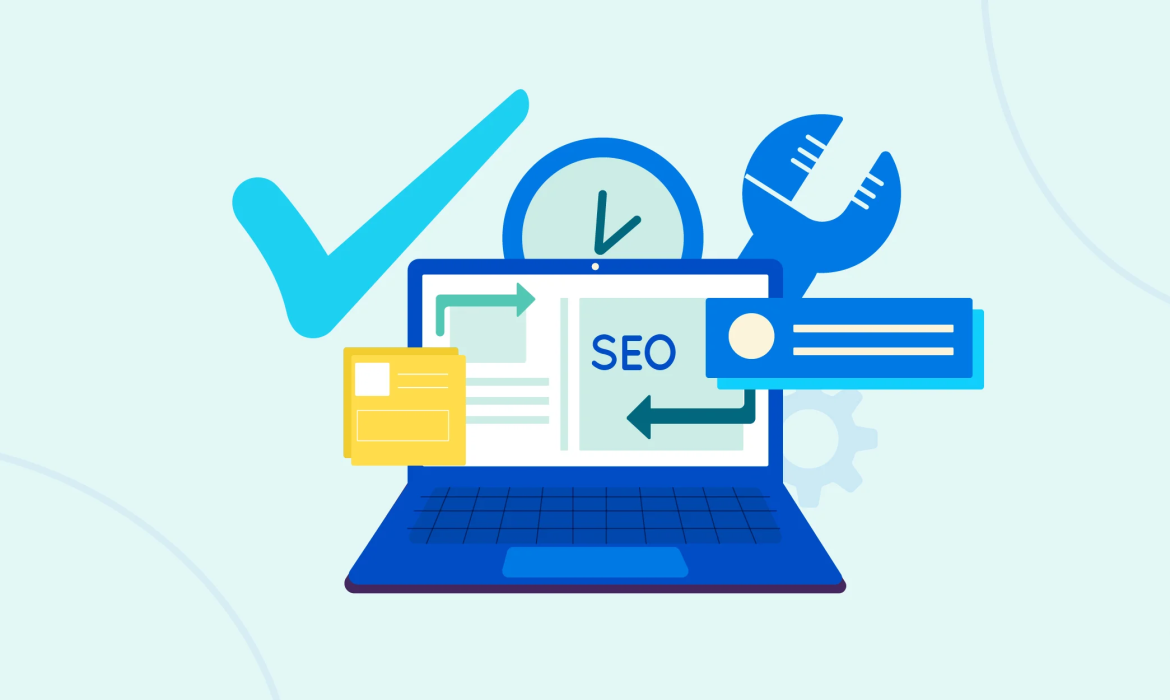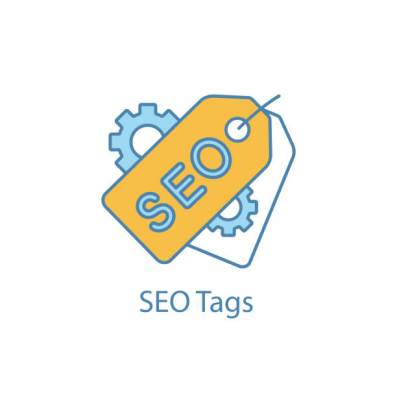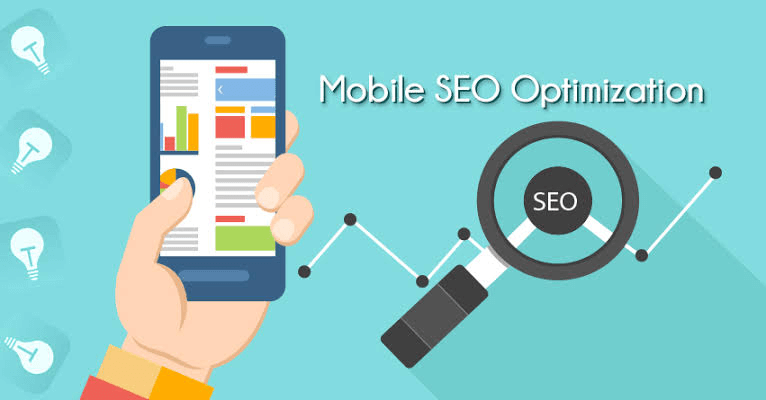On-page SEO Scan
In this feature you able to scan all of the pages on your website to see whether it is search engine friendly. This document will answer the following questions:
- How to use an on-page scan feature to optimize your content?
- How to add keywords and gain more keyword ideas?
- How to add SEO product tags?
- How to set up Meta descriptions for SEO?
- How to set up Meta-robot and Meta-index?
- How to add alt text to your images?
How to use On-page SEO scan feature to optimize your content?


A “Sad Face” shows there are quite some tasks you have to optimize for the search engine. A “Happy Face” shows you are doing an awesome job.
Click on the Action > Optimize Content

Optimize Content:
This section shows the title and description of your products, collections, and blogs. The SEO Ant system will automatically grab all your product information from your pages, after you are done with the optimization simply click on Save to implement all the optimized content to your pages.
The Content SEO Scan Result on the right of the screen will show you what tasks you should do to optimize for a higher ranking.
These are guidelines of how you should optimize for SEO when writing your product list.
- The Green dot indicates what you have done right.
- The Red dot indicates that you should fix the problems right away to gain a better ranking.
- The Grey dot indicates that you should probably take on those tasks after you are done with Red ones.
How to add keywords and gain more keyword ideas?

Put the keyword you want to target here, the system will automatically check for you that where you should put your keyword.
Simply follow the guideline on the right side of the screen to add your target keywords to your content.
Click on Keyword Suggestion / Google Trend to gain more keyword ideas for your content.

How to set product tags for SEO?

Type in the Set product Tag column to add the tags you think are appropriate for your product.
Click on Generate SEO Tags > Generate SEO tags automatically for your product.
How to edit Meta descriptions for SEO?
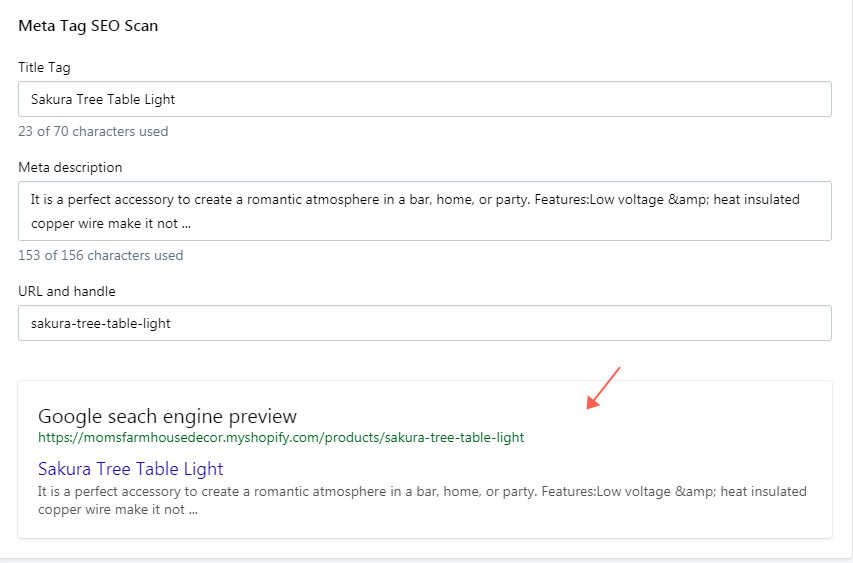
Meta Tag SEO Scan:
In this section, you will able to edit your SERP(Search Engines Result Page). Simply follow the instruction on the Content SEO Scan Result section, it will show you which task you should pay attention to first and how to optimize the page for a better result. Down below, it is the preview of Google’s SERP. You make sure it is readable for potential customers.
How to set up Meta-Robot and Meta-Index?
Click on More advanced setting > Show

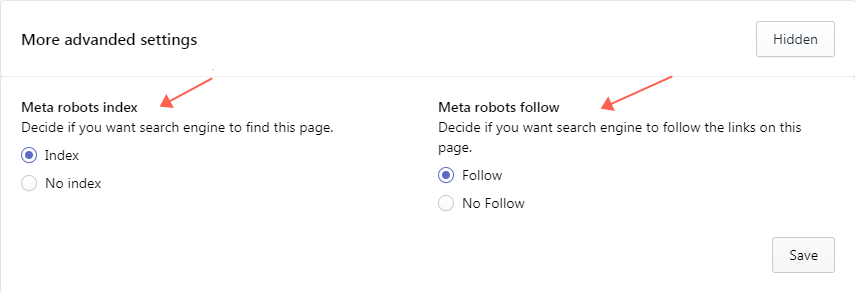
Meta robots index:
This function allows you to decide whether you want Google to see this page.
Meta robots follow:
This function allows you to decide whether you want Google to see/follow the links on this page.
How to add alt text to your images?
Click > On-page SEO Scan

Click on Action> Optimize image alt


Step1: Simply click on the product keyword, product title, and shop name and add those to the alt text column.
Step2: Image alt text will show on the alt text column.
Step3: Click on Apply All.
Step4: Alt text applied to all images of a specific product and click SAVE.
How Important is Page Speed to SEO?
With the rapid development of Internet technology, people’s lives have become accustomed to the speed and convenience brought by the Internet, such as shopping, recruitment, and learning. We gradually lose the desire to wait. If the page loads faster than three seconds, at least half of the visitors will leave, so you need to strive for shorter load times.
The loading speed of the page is very important for a website. Google has taken page speed as one of the actual ranking factors. If your website is too slow, potential customers may leave you because of this, which will seriously affect your ranking and Conversion rate. Next, I’ll show you what web page speed is and how to improve it.
What Is Page Speed?

Page speed is an indicator of how fast a website’s pages load, meaning the amount of time you wait for a website’s page to appear on the screen completely and clearly. This is important for SEO because it helps improve your website’s ranking, user experience, and conversion rates. Improving it allows you to improve overall website performance and overall store performance.
How Important Page Speed Is for SEO
Decreasing the loading speed of the page will improve the following:
- Improve website conversion rate
- Improve your page’s ranking
- Reduce page bounce rate
- Increase the dwell time on the page
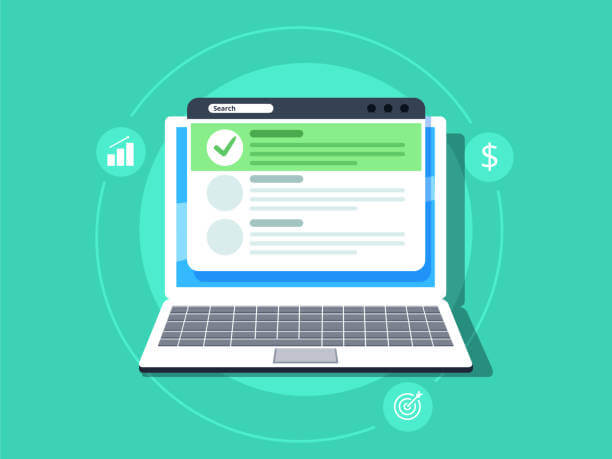
The above are all metrics to measure your page ranking, in short, a slow loading website can damage your Google SEO ranking.
Since page speed is so important, how does Google determine loading speed? You can check the loading speed of your website through Page Speed Insights, and this tool will provide you with solutions.
Testing Your Website’s Page Speed
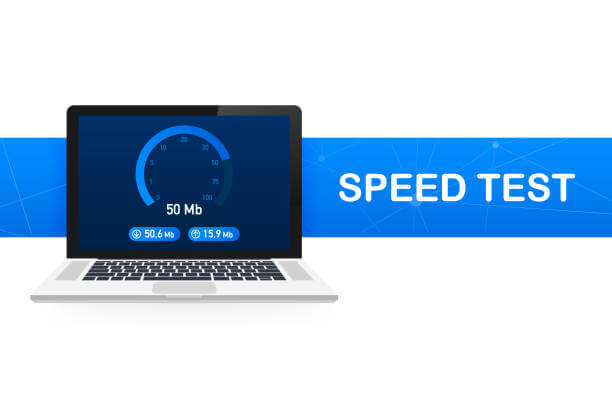
Google PageSpeed Insights is a popular tool for speed testing any page on your website with a score ranging from 0 to 100. If you get a higher score, it means that a particular website page is performing well. Google’s PageSpeed Insights helps you create better content or an improved page speed by providing you with suggestions after the test.
This application can test both desktop and mobile performances for a more detailed test. It may seem detailed and easy to use, but it’s better to be used by experts than by beginners. The report from Google PageSpeed Insight is written in two types: the lab and the field data. The first one is lab data which you can use to identify if there is any debugging issue to resolve and is collected from a controlled surrounding.
Field data, on the contrary, is the real-world history of a certain URL’s performance as well as a user’s record of performance using their device and network. This data is more authentic as it is not like the lab data that is based on the then trolled environment. Specifically, Google PageSpeed Insight reports other data such as the following:
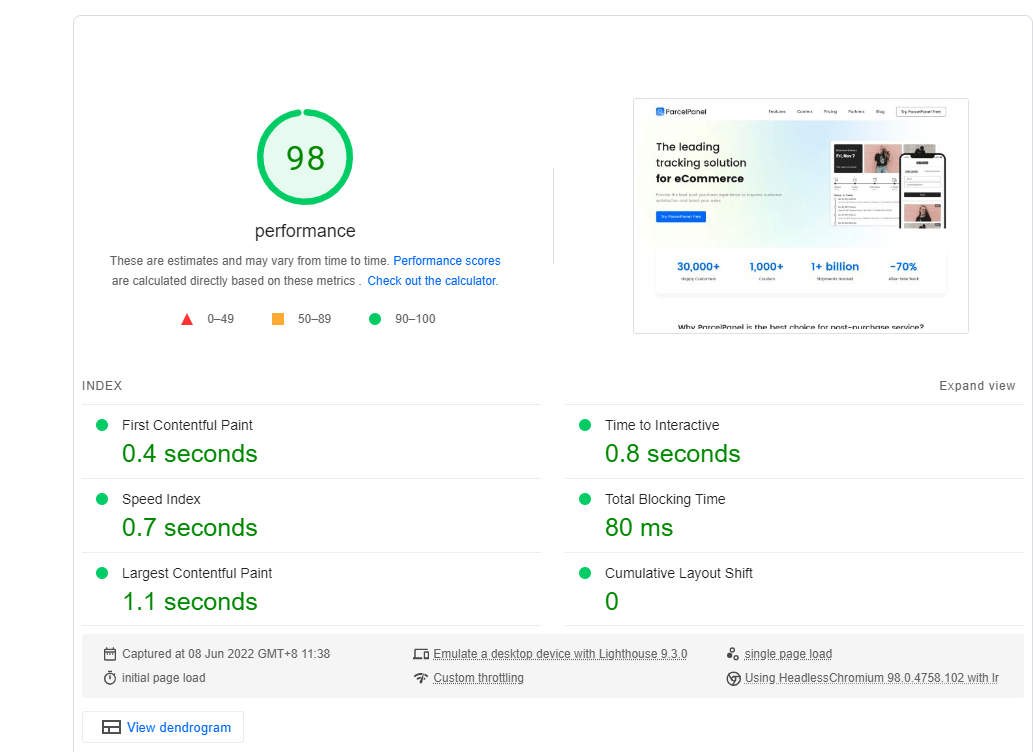
– Performance score is the score overall.
– Summary of Origin is about the review of the Core Web Vitals.
– Opportunities are the suggestions generated by the app to help the website improve its page speed.
– Diagnostics is additional information about how a web page performed.
In checking your own website’s performance using this app, toggling between your mobile phone and desktops is highly recommended. This can help you optimize your content and page speed easier. Most of the time, users focus on the opportunities part of the report as they are concerned about how to improve their page speed and nothing more. They refer to such information for the next step to take on the overall improvement process of their website.
How to Improve Page Speed
Each page is unique, which is the reason why their page speed differs a lot. Despite that, you can still try some ways to improve your website page speed even before testing and getting suggestions from such tools. You may improve your page speed by any of the following means:
- Learn to compress your files. When you upload your files to your website, make sure to use compressed folders. Use an app to help you do the file compression effectively for your files that contain CSS, HTML, and others. However, this does not apply to images. Photoshop is what must be used for that so you can maintain the good quality of your images.

- Clean up and minify your code. This involves code optimization such as removing commas, periods, spaces, etc. You may also remove unused codes and code comments. Lots of HTTP requests can slow down SEO pages, Minimize the use of CSS, HTML, and Javascript as much as possible to dramatically increase your page speed. Google recommends using CSSNano and UglifyJS.
- Optimize your images. Your image file must be in the right format like PNG or JPEG depending on the type of image it is. With graphics that has not more than 16 colors, PNG is a good choice, while for photographs, it is JPEG. Using CSS, images can be compiled into one big file that, when uploaded to a website, uploads all at once. Recommend a picture compression tool, the operation is simple and fast, it can compress 20 images no more than 5M at a time, It will use less bandwidth and load faster.

- Avoid too much redirect. Redirecting means directing users to another page on the website which adds to the waiting time for users. This process often leads to slower loading of a page and customers’ boredom in waiting too long. Use Ahrefs‘ Site Audit feature to help you identify which pages are redirecting and inform solutions to fix redirects more efficiently
- Improve the response time from the servers. The average server response time is up to 200ms. If you cannot achieve that, then it means there can be some problems with your page. such as slow database queries, memory starvation, slow routing, slow application logic, etc.
Final Words
Page speed is just one of the key factors that you need to take care of if you want more traffic and conversion rates. It’s just simple as that. Yet, not all website creators know that. Do not be one of those who just wait for their website page to load each time. Try doing the steps mentioned about for better website and mobile phone performance.
What is The Search Intent of Keywords?
It’s not as simple as simply choosing words and plugging them into your web pages when using keywords in search engine optimization. The ability of search engines to understand and rank web content has become more intuitive. A search engine today considers the context of a keyword (for example, how it is used and for what purpose) instead of the number of times a keyword appears on a webpage to determine the authority of a topic.
Contextuality refers to the user’s search intent in evaluating a keyword. In order to create relevant and helpful content for the website, it is crucial to understand keyword search intent. This will ensure you are creating content that will satisfy the needs of your target audience.
What is Search Engine Intent?
A specific online search requires the user or audience to know what they are looking for. “Race” as in a “marathon race” versus “culture”), so search engines consider search intent to deliver results based on what they think the audience is looking for. Because search engines address context rather than just the definition of a keyword, they can understand search intent. For example, searching for “SEO” on Google will recommend some keywords related to SEO.
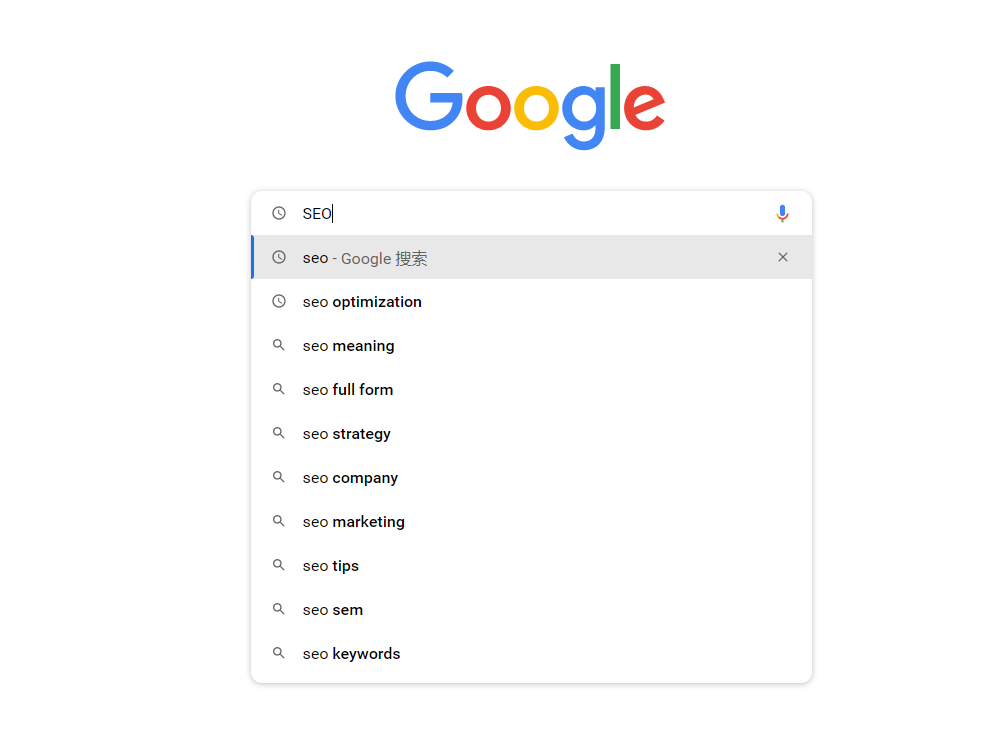
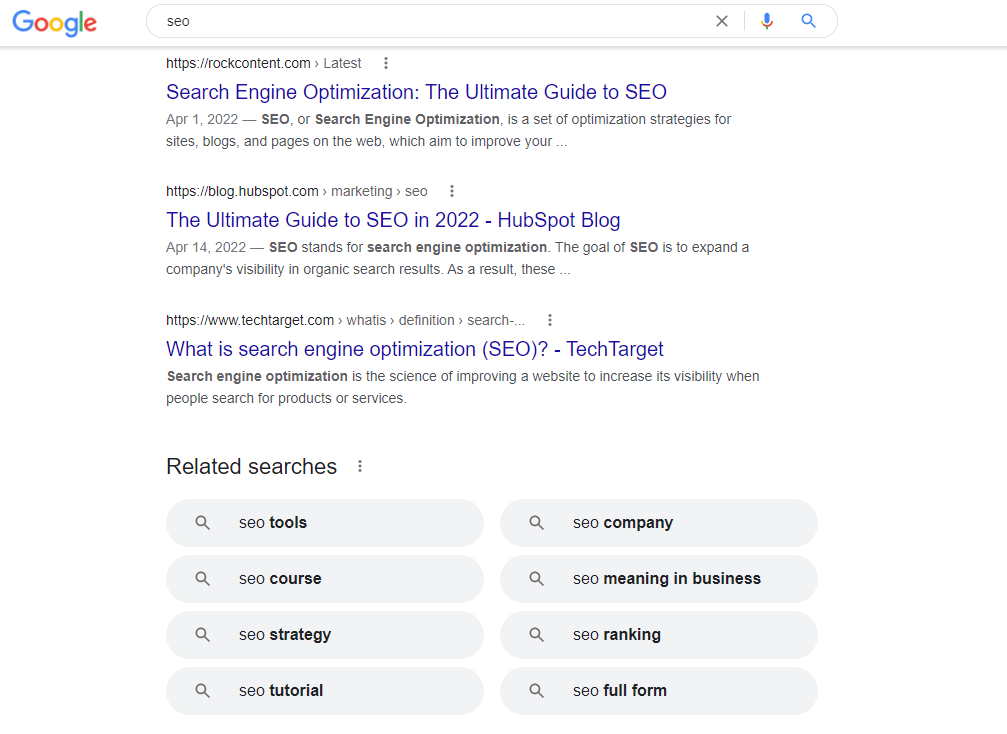
An aspect of this context includes factors such as headings on website pages (H1s, H2s), links inside and outside of the website, anchor texts for links, images, and alt text for pictures. In order to be able to determine how a keyword is being used and defined, search engines rely on these factors.
Search Intent: 4 Types
There are four types of search intent:
1. Informational Search Intent:
In this case, the user searches for information, such as definitions and explanations, to answer specific questions. These types of search intentions usually lead to content that is of a How-To, What-Is, and Why-Is nature (e.g., Wikipedia entries, blog posts, and instructional videos).
Examples: “What is localhost ?” “types of intent,” “history of ottoman”,”what”,”how”,”guide”,
2. Navigational Search Intent:
In this case, users who do this kind of search are looking for a specific location, such as a website, a physical location, or even a particular spot on a website.
Examples: “DingTalk,” “Netflix pricing.”
3. Transactional Search Intent:
An individual with this search intent is likely to be seeking to make some kind of transaction. Most users are already aware of their search intent (branding, product, pricing, etc.) and are willing to convert or purchase a product or service based on the information they have already gathered.
Examples: “Beer bottles,” “Apple iPhone.”
4. Commercial Search Intent:
Transaction-oriented search intent is an investigation or research aimed at reaching a conclusion. In commercial search intent, customer readiness is different from transactional search intent. That intent on transactional search intends to transact immediately, and those intent on commercial search intend to transact at a later date. In addition, informational search intent is different from evergreen search intent, which is the search for evergreen content that is not subject to seasons or time limits. In commercial searches, keywords with qualifiers such as “discount,” “deals,” “best,” or a date generally specify commercial search intent.
Examples: “deal on pizza,” “vodka discount,” “best soundbar
What is a Keyword Expansion?
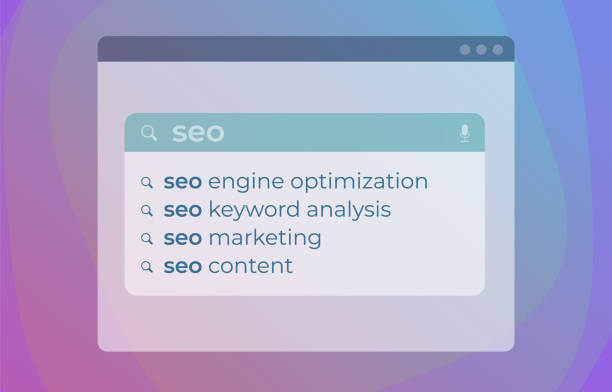
Expanding your keyword list and search campaign is the act of adding more keywords to your current keywords, You can add some modifiers “best” “free” etc. so you are ranked for more keywords and receive more traffic.
Having stagnant keywords is as dangerous as a stagnant business as it is a source of trouble for your search marketing campaigns. In fact, the two can become related over time. It is imperative to stay relevant and competitive by expanding your keywords. You can expand your keywords by using tools, I recommend using Ahrefs.
A Guide to Determining a Keyword’s Search Intent
1. Analyze your keyword results in the SERPs
.png)
After you choose a topic, you’ve probably also decided on a keyword to focus on (e.g., “water bottles,” “marathons,” “net zero”).
You should start by looking at the top SERP results for your keyword before analyzing its search intent. You’ll know how search engines interpret your content because of this.
2. How to build your keyword cloud
You can begin to brainstorm keywords to develop your keyword cloud or cluster after you have identified your primary keyword in the SERP. You will target long-tail keywords that are associated with the primary keyword you selected at the beginning of the post but with additional qualifiers that further state the intent of your content (for example, how to wire a dual voice coil subwoofer).
you can search for long-tail keywords such as (what is the best bluetooth headset):
- “headset” (searches per month: 45K)
- “bluetooth headset” (searches per month: 25K)
- “what is the best bluetooth headset” (monthly search volume: 200)
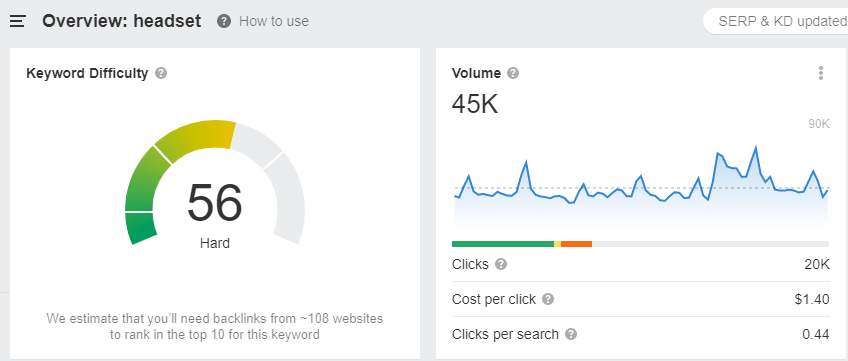
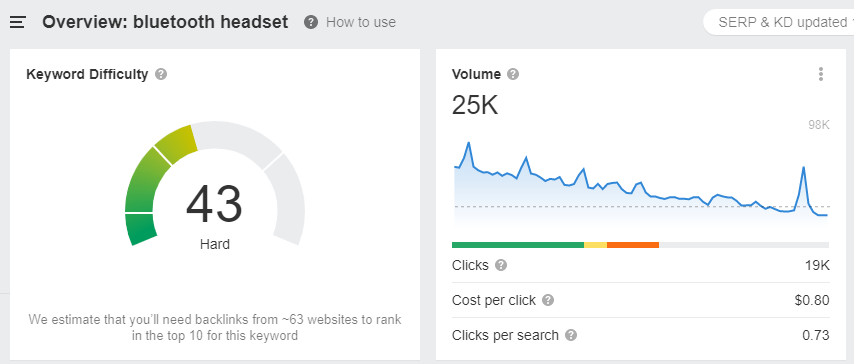
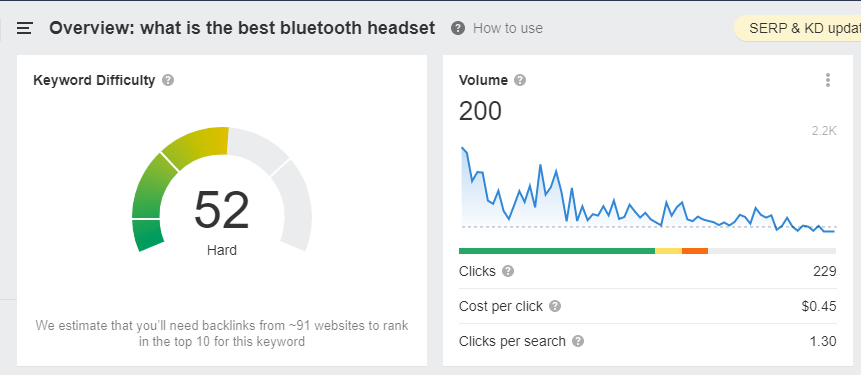
It is essential to understand that these long-tailed keywords have different search intents that inform which search qualifier to use based on your content’s search intent. I think that it would be better if your primary keyword, the one you selected at the beginning, would be replaced by a more long-tail, niche keyword in the research process.
As soon as a list of long-tailed keywords which you think are aligned with the content’s intent has been created, it is straightforward to analyze the search intent of your keywords. You can do this by searching for these long-tailed keywords in search engines as you would have done with your primary keyword.
3. Determine the scope of search intent by mapping out the spectrum
You may see your keyword cloud changing once you are able to better understand the search intent behind the long-tailed keywords you have chosen to use. This may lead you to re-prioritize keywords with search intents that are not aligned with your content purpose, or it could prove beneficial to capture more long-tailed keywords aligned with your content’s purpose.
With your content goals clearly defined, you can begin mapping out search intent spectrums to figure out which keywords and search intents are closest to your content goals and which are farthest away.
How to optimize content for search intent
After fact-checking your primary keyword, you can start creating or optimizing your content.
The search engines understand keywords and topics much more intuitively and consider the context of a keyword.
Optimization of on-page and off-page factors includes:
- H1 and H2 headings.Your content needs to address top and relevant topics in the H2s and subheadings to meet the target audience’s needs.
- Inter-Links:You want search engines to understand your content contains both internal and external links to relevant pages. Furthermore, internal links offer users a seamless navigation experience that leads them to other pertinent topics or a call-to-action.
- The anchor text:Anchor text serves as a way to tell a search engine how and why content is related and why it references and associates with other content. Search engines use anchor text to understand a topic holistically.
- Images:I would like to emphasize one more thing; as I mentioned earlier in this article, using images not only makes your content more engaging for the reader but also gives search engines more hints about what the content is about so that they can understand what you are writing about – for instance, making an image of a marathon runner visible to search engines on your content about “race day” eliminates the possibility of search engines confusing the content about marathon races with ethnicity.
- Adding alt text to images:Add descriptive text to images as an alternative to images, which can also help search engines index the images correctly for searches in Google Image.
Understanding how to develop content that is relevant to your readers’ search intent will put you on the path to creating relevant, helpful, and authoritative content. Many factors affect the performance, rank, and authority of content on the web.
What is a Canonical Tag and How To Use It?
The process of URL canonicalization involves selecting a definitive version of a URL and tagging all pages linking to it with a canonical tag.
What is Canonical Tag?
.jpg)
HTML canonical tags, which are also called rel canonical tags, can tell search engines which version of the page is the original and definitive version. The canonical URL.
This tag is found in the section of the page and has the following format:
An example website can be found at link rel=”canonical” href=”https://www.example.com”
On a practical level, canonical tags tell Google which page you want to appear on when you search for a particular query.
What Is the Importance of Canonical Tags?
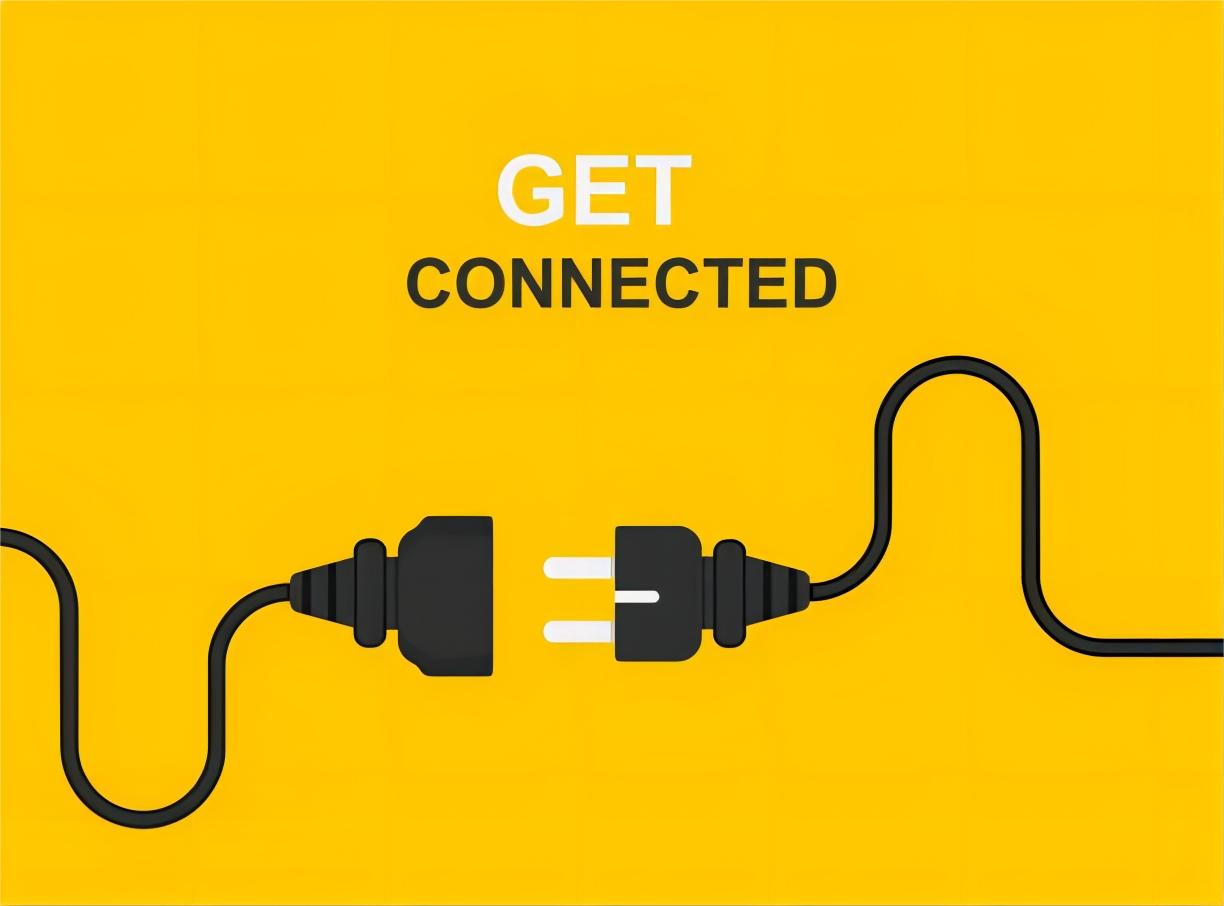
There is a tendency for humans to think of all pages having the same look and content as one. They tend to see it as a single document. They will see it on the home page. But search engines don’t love it. If they serve similar purposes, they treat different URLs differently.
Google considers each of these URLs as unique:
- https://www.example.com
- example.com/
- https://www.example.com/index.php
- com
Despite the fact that humans see only one page on your website, Google sees five copies of your homepage. The problem of duplicate content can arise in this case.
What impact does this have on your website?
Despite the fact that Google does not penalize duplicate content, copying pages can have serious consequences on your search engine optimization:
- It is possible to dilute link building by linking to the wrong version of an URL. In many cases, they add a trailing slash or do not include the HTTPS part. Those links will not pass the link juice to the right page without a canonical tag.
- By crawling copies of content they’ve already seen, hosting duplicate content causes Google’s crawlers to waste time. When Google believes your site is mostly duplicate, they are less likely to look at additional pages on it.
Canonical tags are used to prevent duplicate content issues.
How to add canonical tags to your pages
Canonical tags are coded as follows:
A link with rel=”canonical” href=”http://www.example.com”
Normally, it is found in a page’s *head> section. Heading is the code between a page’s *head> and */head> tags in its HTML code.
A lot depends on what kind of site you have on how you add canonical tags to your pages. If you have a WordPress site, you can add Canonicals with the following plugins:
- Yoast SEO
- RankMath
Best Practices for Canonical Tags
In spite of the canonical tag being a simple piece of coding to add, it’s imperative that the tags be used in accordance with the best Due to canonicals telling Google to move onto canonical URL when a page is on a canonical URL, you can damage the SEO of your site. Sites SEO.
Using self-referential canonicals
Using canonical tags doesn’t have to be mandatory, but it wouldn’t hurt either. Canonical citations that link to themselves are called self-referencing canonicals. If this canonical tag appears on https://www.example.com/page1:
There is a link rel=”canonical” href=”https://www.example.com/page1″
This isn’t necessary, but it wouldn’t hurt. In the world of SEO, this is not an obvious question.
Access your canonical URL
Another obvious point. You are saying one page is the definitive one, but then you are redirecting Google to another URL on the same page? Why would you do that? Why wouldn’t you redirect Google to a 404 error page? Wouldn’t that be better than a robots.txt blocked URL? Nevertheless, it does happen from time to time.
Please note that they do not canonicalize URLs unless they return a 200 status code and are allowed in the robots.txt file. In your site’s XML sitemap, make sure your site’s canonical URL is also listed. Make sure that the no-index attribute is added to your site’s canonical URL.
If you are using a program that automatically creates canonical tags, then double-check what you have would be a good idea. Some plugins and CMS platforms will create a canonical URL for every URL on your site, which defeats the purpose of canonicalizing URLs.
URLs should be absolute.
Please add the URL in its entirety to canonical tags. To clarify: you need to include the following parts in the URL:
- HTTP://
- Your preferred domain name (if it contains the www)
- Name of your domain
- Ending with .com.
When Google reads your canonical tag, it recognizes only URLs that include the part after the “.com.” This is called an “absolute URL.” URLs with just the “.com” are called “relative URLs” and aren’t recognized.
Using an absolute URL will prevent Google from ignoring your tag.
Domains CAN be canonicalized.
A canonical URL from site A to site B (websitea.com) can be pointed to site B if you own both sites. Publish multiple properties of the same content but only want to rank one. This makes sense for media companies.
Avoid creating “canonical chains.”
We created these “canonical chains,” which are like tags on page A that point to page B. In addition, you canonicalize page B to point to page C. As a result, and Google receives a confusing signal. This is because it considers both URLs to be the definitive version of the page.
Google will likely ignore canonicals in bigoted canonical situations like this.
Pick one version (page C) that will represent the canonical version. Therefore, both page A and page B should have canonical tags linking to page C.
The most common canonical tag errors
Everyone isn’t perfect. There is the possibility that you will occasionally make an error when setting up your canonical tags. Here are the top five problems people encounter when trying to canonicalize their URLs.
Pagination and canonicals
Combined with paginated content, canonical tags are a great tool. Those aren’t errors. Unfortunately, people often make errors by adding canonical tags to every page that point back to page 1. This canonical tag, for example, would apply to https://www.example.com/content_page1:
link rel=”canonical” href=”https://www.example.com/content_page1”
This tag of https://www.example.com/content_page2 should appear on the following page:
link rel=”canonical” href=”https://www.example.com/content_page2”
Problems arise when the following tag is added to https://www.example.com/content_page2:
A link with rel=”canonical” href=”https://www.example.com/content_page1″ is provided as an example.
The second page of content will not be indexed by Google.
A canonical URL and hreflang
It is perfectly safe to use canonical tags and hreflang tags. Canonicalizing pages in one language to the same page in another can be a problem because it is easy to make a mistake. Hreflang tags are designed to help with this.
You should double-check canonicals and hreflangs if you’ve used both English and Spanish canonical URLs.
To use this example, if the canonical URL is https://www.example.com that is also available in Spanish, the canonical and the hreflang will look like this:
link rel=”canonical” href=”https://www.example.com”
link rel=”alternate” hreflang=”en” href=”https://www.example.com
link rel=”alternate” hreflang=”es” href=”https://www.example.com/es”
It’s simple enough, but it’s easy to make a mistake if you aren’t paying attention in the right places.
Pages that aren’t similarly structured can be tagged using canonical tags.
Multiple pages can be found on a website covering the same subject. There are a lot of blog posts on keyword research, content marketing, and advanced search engine optimization. The description and specifications of two products on an e-commerce site might be very similar.
Although the two pages have some similarities, they serve very different purposes and should not be linked canonically to each other, even though they are quite similar.
It could be that Google will stop trusting your canonical tags entirely if you use them too aggressively. Therefore, if you use canonical tags on any page, you will suffer from those possible duplicate content issues described above.
What Is The Next Step?
Canonical tags aren’t as complicated as they seem once you understand them. Following best practices will enable you to easily maintain your website’s ranking in Google’s crawlers by using canonical tags.
The following topics will help you understand how Google crawls and understands your website once you have set up your canonicals:
- URL best practices
- HTTPS status codes
- Crawl errors
- txt
How to Write Good Meta Tags for SEO?
Whether it’s meta titles, meta descriptions, or robot meta tags, one thing is for sure – if you’re a website owner, and you don’t use meta tags in your SEO arsenal, then you’re missing out on an incredible opportunity to rank higher on Google search engine result pages.
But don’t worry, as in this article, I’ll be running through the beginner’s guide to Meta Tags for SEO—what meta tags are, why you should use them, and how to best use them for higher SEO rankings.
Therefore, I urge you to read on.
What Are Meta Tags?

Meta tags are a part of the HTML tags and codes for your website.
They give information about the contents of the pages on your website in the HTML document.
The information is called metadata.
It is read by web crawlers and search engines and is usually not shown on the web page.
Google, Yahoo, Bing, DuckDuckGo, Yandex, and other search engines need meta tags to better comprehend the contents of your web pages.
They use the information to rank your web pages and to show snippets in search results pages.
The titles and brief descriptions you see on the search engine results pages are provided by meta tags, specifically the meta title and meta description.
They may ignore meta tags in certain situations.
Therefore, meta tags create the first impression internet users and search engines have of your website.
They are very important for a good user experience and SEO purposes.
Why Are Meta Tags Important?
As I’ve said earlier, meta tags are code snippets that help search engine robots better understand and navigate your web pages.
They are not visible because they are a part of the HTML code.
Meta tags also play a big role in the SEO world.
Here are some reasons why meta tags are important and why you should use them:
- Meta tags help Google understand your web page’s contents better.
- Meta tags help web robots like Google Bots crawl and index your website.
- Meta tags are important for the organic rankings of web pages.
- Meta tags help internet users better understand what your web pages are about, which is useful for better click-through rates.
- Meta tags help search engines know how to display your content in the search result pages,
- Meta tags help web browsers know how you want your content displayed to visitors.
Here are the most relevant meta tags and the best ways of optimizing them to rank higher on Google and other search engines:
- Meta Title
- Meta Description
- Meta Robots
- Meta Charset
- Meta Viewport
- Meta Refresh Direct
The Most Important Meta Tags You Need
In this section, we’ll see the most important meta tags you need for ranking purposes.
Meta Title
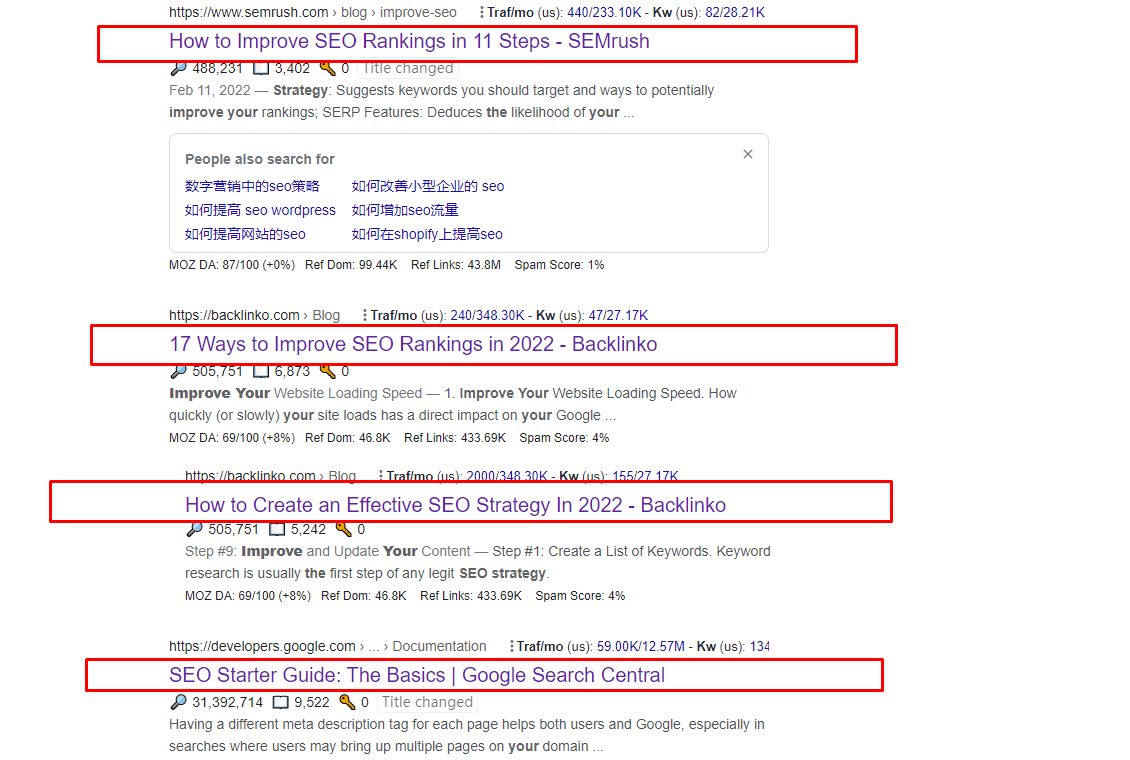
Meta titles are the bolder blocks of text you see on Google search engine result pages whenever you make a search query.
Search engines like Google display meta titles as the page titles in the search engine results pages.
In your HTML code, meta titles are the first and most basic HTML elements.
It tells search engines like Google and your visitors the title of your web page.
You add meta titles to the “head” part of the HTML code. Below is a sample format:
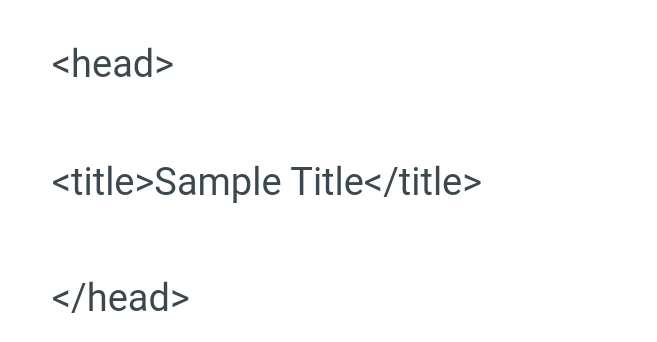
What’s the Need for SEO?
Meta titles are arguably one of the most important meta tags for SEO because they directly affect the rankings of your website.
They are an essential component of on-page SEO and are a ranking factor.
Therefore, if you don’t have meta titles, you’re doing yourself a great injustice SEO-wise.
Meta titles are key for SEO because they provide visitors with a quick overview of what your content is all about and how relevant it’ll be to their search query.
It’s the principal yardstick through which users determine whether or not to click on your website from the result pages.
Additionally, meta titles are displayed on the browser and the search engine results page when users visit your website.
They are also important when you want to shuffle between several browsing tabs because you can view the title of the web page on the browser tab.
It is therefore of paramount necessity that you employ top-notch meta titles on your pages.
What Are the Best Practices for Meta Titles?
- Your meta titleshould be original for all your pages.
- It should be concise and very descriptive.
- Your meta titles should feature a title case or sentence case.
- Do not use vague and generic meta titles.
- Meta titles must be relevant to the search query.
- It should be under 60 characters long.
- Your meta titles should have modifiers—like how-to, buy, tips, top, find, and so on.
- If your brand is very popular, then include it in your meta titles for more clicks.
- Your meta titles should be clickable.
- Incorporate numbers into your meta titles if possible, as this works better.
- Your meta titles should incorporate target keywords where appropriate, especially at the beginning.
Common Errors with Meta Titles
- Not using meta titles: Google stipulates that all your web pages should have meta titles.
- Inappropriate length- Always ensure your meta titles are of the standard length of not more than 60 characters. They should be succinct and super-explanatory, not too long and wordy.
- Several meta-titles- It’s very bad practice to have more than one title tag per web page. If you have multiple meta titles on one page, Google may display one that you don’t like or that’s not very effective.
- Duplicate titles: When you have the same meta titles for more than one page, you can create confusion for search engine robots. Therefore, all your web pages must have different descriptive meta titles.
Meta Description
A meta description is a summary of the contents of a web page.
They are used by Google and other search engines for snippets of answers in the search engine results pages.

It is an HTML description tag, a short snippet code of about 155 characters that gives a summary of the content of a web page, telling your users what your content is all about.
Here is an example of an HTML description code:

Meta descriptions are displayed by search engines whenever they contain a phrase in the search query.
It is displayed beneath the page title and page address/URL on the search engine results page.
The meta description is a critical pillar of on-page SEO, so it’s integral for you to understand and use it well.
In some scenarios, Google will opt for another snippet answer and will not display your preferred meta description.
However, it’s still worth the effort to try because the more optimized your meta description is, the higher the chance of Google using it.
Meta Description and Why It Is Good for SEO
Meta descriptions provide users with general information about the content of your web pages.
It should give a brief and relevant summary that’ll interest internet users enough to click on your web page.
Additionally, they help to convince users that the page they are about to click on is relevant to their search query.
Even though meta descriptions do all this good stuff, Google says they do not use meta descriptions as ranking criteria and so they do not directly affect your website rankings.
Note that the keyword there is direct. The juicer your meta descriptions are, the more likely a searcher will click on your website, and the higher your click-through rates, the more rankings you’ll have.
You should not only inform your visitors what they’ll see on your web page, but you should present it in a way that is enticing for them to want to click on your web link.
Therefore, to summarize, meta descriptions help generate click-throughs for your web pages.
What Are The Best Practices for Meta Descriptions?
Below are some of the meta description best practices to apply for better SEO:
- All of your web pages should have an original meta description.
- Do not use generic meta descriptions.
- Use accurate summaries of your content.
- Your meta description should be actionable, motivating, and clickable. You should tell the user what he/she will get from visiting your page. It shouldn’t be cryptic, dull, or too difficult to understand.
- Apply sentence case to your meta description.
- Your meta description length should be below 160 characters.
- Your meta description should be relevant to the search query.
- Employ active voice,
- Use calls-to-action like “learn more,” “try for free,” “get it now,” “read on,” and so on to get users to click.
- Incorporate your target or primary keywords where appropriate, especially in the beginning. That’ll entice Google into using your meta description more.
- Your meta descriptionmust matches your content. Never use meta descriptions as clickbait, as it’ll only be counterproductive. When users find out that your content doesn’t match your meta description, then your bounce rate will hit the roof. That’s very bad for SEO.
Common Errors with Meta Descriptions
Here are the most common errors with meta descriptions that you should aim to avoid:
No Meta Descriptions
It’s a very big error not to incorporate meta descriptions on your web pages.
Google is very clear on this because it says there should be a meta description on every page of your website.
Inappropriate Length
Google stipulates that there are no requirements per se as to how long a meta description should be because the snippets are usually shortened when there is a need to fit the width of the device.
However, the best practice is to keep it short and as descriptive as possible.
If you wouldn’t want your meta description to be truncated, then I must mention that the metric Google uses to measure the length of meta descriptions is the pixel appearance on the search engine results pages.
The limit is 929 pixels on desktops, which amounts to about 158 characters, and on mobile, it is 680 pixels, which amounts to 120 characters.
Therefore, anything between 120 and 158 characters is optimal so that when Google decides to use your well-crafted meta description, it won’t be truncated.
Duplicate Meta Descriptions
You should have different meta descriptions for all of your web pages.
When you use the same meta description for multiple web pages, it can confuse Google bots when crawling and indexing pages.
Also, the user experience will be reduced because all the web pages will look alike, which is bad for SEO.
Several different meta descriptions on the same page
When you have two or more meta descriptions on one web page, you’re creating confusion for search engine robots.
Each page should have a unique meta description.
Meta Robots
The Meta robots tag provides Google and other search engines with the needed information on how to crawl and index the content of your web pages.
Why Is a Meta Robot Tag Important for SEO?
If your meta robot tag has incorrect attributes, the effect will be bad for your ranking on the search engine results page.
Below are things to take note of about meta robot tags:
- index: informs Google and other search engine bots to index a web page.
- noindex: informs Google and other search engine bots not to index a web page.
- follow: informs internet robots that you vouch for the links on a web page and that they can crawl it.
- nofollow: informs search engine robots that they should not crawl links on a web page and that you don’t endorse them.
An effective way of using them is:

Meta Robots Tag-Best Practices
- You should only apply meta robots tags when you want to restrict search engines from crawling a web page.
- Don’t use meta robot tags in the form of robots.txt to block web pages.
Common Errors with the Meta Robots Tag
- txt blocks noindex pages: This error keeps Google from identifying the noindex tag. So, they’ll index the web address nonetheless.
- Roguemeta nofollow: This error keeps Google from crawling the web address on the web page. Therefore, the important contents on the web pages are not seen and indexed.
- Rogue meta noindex: This error stops Google from indexing a web page, so it doesn’t have any web traffic.
Meta Charset
The Meta charset dictates the encoding for the characters of the contents of your web pages.
It tells your visitors’ browsers how they should display the text on your web page.
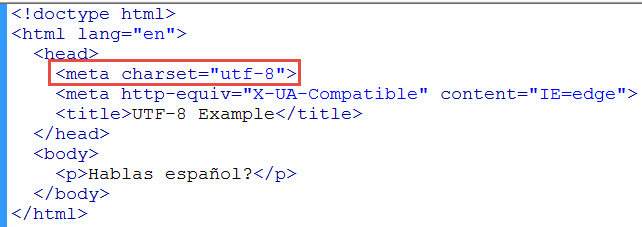
The two most common character sets include:
- UTF-8-Thisencoding character is for Unicode.
- ISO-8859-1- This encoding character is for the Latin alphabet.
Why Meta Charset Is Important for SEO?
When you have issues with the formatting of your web page’s characters, your contents will appear broken, which is bad for the user experience.
Best Meta Charset Practices
- Always use meta charset tags.
- Apply UTF-8 as much as possible.
Meta Viewport
Meta viewport tags are those meta tags that are responsible for setting the area that is visible on a web page.
It gives browsers instructions on how they should render web pages on different screen sizes—desktop, mobile, and tablets.
Meta viewport tags look like this:
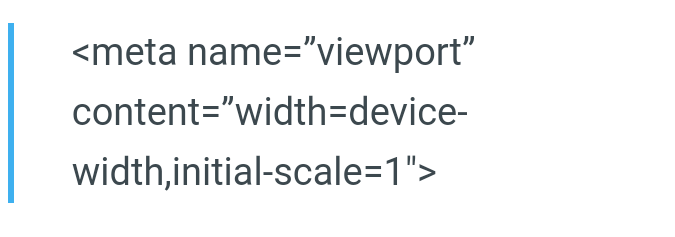
Why Are Meta Viewport Tags Relevant for SEO?
Meta viewport tags are important because when they are present, it tells search engines like Google that your web pages are mobile-friendly.
That is very important because a mobile-friendly website will rank higher on Google search engine result pages than one that is not.
Since the bulk of internet searches are done on mobile devices, this meta tag is very essential.
If users visit your website on a mobile device and the desktop version loads, they are very likely to leave your site, which will increase the bounce rate.
Additionally, the user experience will fall too, which is bad for SEO.
Best Practices for Meta Viewport Tags
- You should apply meta viewport tags on all your web pages.
- The standard tag should be used.
Meta Refresh Direct
The meta refresh direct tag is a meta tag that redirects the web browser of your users to another web address or URL after a given time.
Why is the Meta Refresh Direct Important for SEO?
You should not use meta refresh to redirect data. That is because:
- Not all web browsers support them.
- They can generate security concerns and create user confusion.
- They can be time-consuming because the pages require analysis before the destination URL can be seen.
Meta Refresh Direct-Best Practices
- Don’t use the meta refresh redirect tag. Use it only when it’s very necessary.
- You should apply a 301 redirect instead.
Conclusion
We have covered the six most important SEO-friendly meta tags that you need to rank higher on Google search engine result pages.
All you need to do now is get to work, applying these best SEO-friendly meta tag practices.
How to Improve Your Mobile Site for SEO
When you consider the fact that Google accounts for 94 percent of organic search traffic and that it places a high premium on how mobile-friendly your website is when ranking, you’ll know that optimizing your mobile site is a key investment you need to make.
What is it about a mobile-friendly website that makes it a powerful tool to boost your search engine results page rankings?
Read on to find out more about this and much more!
Mobile SEO: What Is It?

Mobile SEO is the process whereby you optimize your desktop website so that it’s relevant to users of mobile devices.
It involves working on the characteristics of your website so that people can have a great positive experience when they visit your platform on their mobile devices.
With the explosion in organic traffic coming from mobile phones and tablets, it’s no longer news that Google has made mobile SEO a ranking factor for websites.
Sixty-six percent of shoppers make purchases on their mobile devices, and this figure is bound to increase in the coming years.
It is, therefore, clear that mobile SEO is a part of on-page optimization that you need to invest big time in, and in no time, you’ll begin to reap the harvests of increased traffic and click-through rates.
Why Is Mobile SEO Important?
Mobile SEO is essential for your business, and here’s why:
Mobile Devices Make up 70 Percent of Online Time
When users surf the internet, they do so with their mobile phones or tablets 70 percent of the time.
Logically, that’ll tell you that you need to optimize your website so that during that chunk of time, they have a positive experience while they interface with your website.
If you fail to do this, you risk losing a major source of your organic traffic as a result of a bad mobile experience.
When Crawling and Indexing, Google Places a High Premium on Mobile Sites.
Ever since a greater percentage of internet users make searches with their phones than on computers, Google has given a higher value to the mobile-first index.
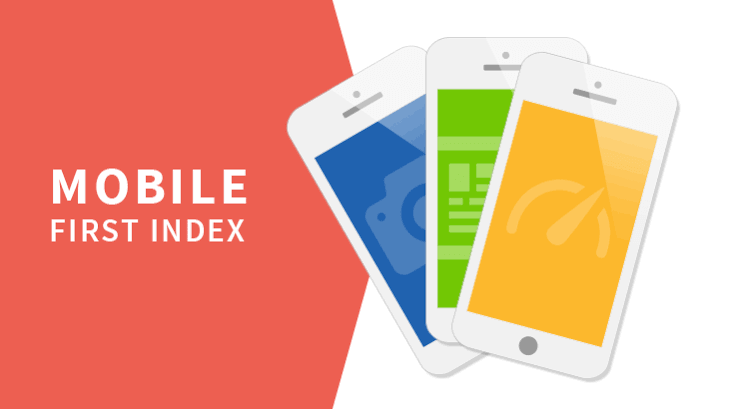
That means Googlebot crawlers will first take a peek at the mobile version of your website whenever there is a related search query.
Therefore, if you don’t have a mobile version of your website, Google will first present other sites to users before your site can appear on the list.
That means lower rankings for your business platform, which ultimately means less traffic, fewer leads, and lower revenue.
Mobile-Friendly Websites Have a 67 Percent Chance of Landing a Sale.
The more mobile-friendly your website is, the more conversion rates you’ll have.
Internet shoppers buy more using their phones than desktops.
Therefore, if you have a user-friendly mobile platform, your customers are more likely to buy from you, which in turn, improves your conversions.
60 percent of Mobile Visitors Leave Your Website with a Positive Opinion About Your Business
The goal of mobile SEO is to optimize your mobile platform so that users will have the best possible experience.
Whenever they do, 60 percent of them leave with a good opinion about your business and they may even give you a good review.
If your business is not mobile-optimized, the bounce rates will increase, and customers will leave harboring a bad impression of your business and probably give you a bad review.
That’ll lead to a lower ranking, which isn’t what you want for your growing business.
Mobile-Friendly Platforms Have a 74 Percent Return Rate.
When your website provides visitors with a great positive experience, besides leaving with a good opinion about your business, they are more likely to return.
74 percent of them will.
Your current client is your best client, which is why you should do everything possible for them to return.
Characteristics of a Mobile-Friendly Website
If your business platform has the following features, then it is mobile-friendly:
- Fast loading speed
- Content is readily comprehensive for Google and other search engines.
- Users can get the information they want or make purchases seamlessly and quickly.
- Web content is easy to read.
- Smooth navigation by touch,
- Mobile users get good value.
- Loads well on smartphones and other mobile devices.
Checking the Mobile-Friendliness of Your Website
There’s an easy method to check the degree to which your website is mobile-friendly.
That is through the Google mobile-friendly test using the Google mobile page testing tool.

You can access this tool directly on the website or search for “mobile-friendly test” on Google.
When you’re on the test page, input the URL of the web page you want to test and hit the “Test URL” option.
You’ll see the status report for your site.
The Basic Guide to Improving Your Mobile Platform
In this section, we’ll look at the top tips to optimize your mobile website.
Provide Top-Notch User Experience
A key focus of your mobile optimization strategy should be to increase your user experience so that both your visitors and Google will be happy.
How do you do this?
- Provide a responsive design—more on this later.
- Offer a website design that is thumb-friendly—that means your mobile website should have enough room for visitors to easily scroll and navigate with their thumbs.
- Make your calls to action easily accessible—the aim of your website content is to generate conversions.
It’ll be bad marketing to generate good content when your customers cannot easily find your call to action.
You should make them bold, big enough, and easy to find.
- Make fonts legible: you should make the fonts of your website’s contents more readable than those on the desktop version because mobile devices have smaller screens.
Select a size and format that’ll appeal to visitors.
Apply a Responsive Design

A website with a responsive design adjusts itself to suit the device the user accesses the site with, whether it’s a desktop, tablet, or smartphone.
This feature makes it easy for visitors to navigate your website because they can scroll through the site easily.
Without this feature, you’re certainly going to have high bounce rates because your content will be unreadable and crowded.
Visitors may even be forced to zoom in and zoom out endlessly, which is so much stress.
You can get this feature if you employ WordPress, or you can confirm with your web developer the responsiveness status of your website and implement it if it is not.
Boost the Loading Speed of Your Website
The loading speed and loading time of your web pages are two of the most critical mobile optimization tips.
It has been a Google ranking factor for a while, and the reason isn’t farfetched.
Nobody wants to hang around waiting for a site to load when there are many other options.
If your site takes more than three seconds to load, then your bounce rate will likely be through the roof as users will bounce from your website, never to return.
A study revealed that as much as 53 percent of users abandon a slow-loading page and half of the online users expect a page to open within two seconds.
Therefore, this metric is not something you should mess around with.
You can test the speed of your website using the Google mobile speed test.
If it’s slow, you need to invest in optimizing your web page load speed.
Some useful tips for increasing page speed include:
- Reduce HTTP requests—reduce the demands on the various elements on your page, such as images, scripts, stylesheets, and so on. The higher the on-page components your web page possesses, the slower it is.
- Reduce Javascript, HTML, and CSS files—the more of these files your website has, the greater the demand for them, which makes your site slower.
- Upgrade your host—the higher your visitors, the more your site needs an upgraded host.
- Activate browser caching so that pages are served faster.
- Eliminate plug-ins that are not necessary.
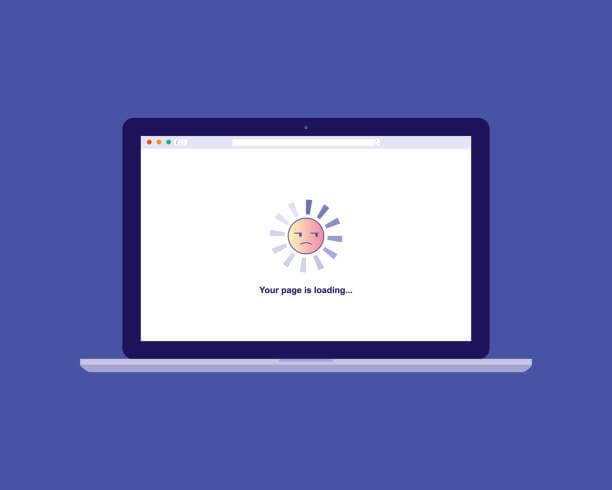
Image Optimization
Optimizing your images is an effective way of reducing your page load speed and making them load faster.
Large images make your website slow.
You should, therefore, ensure that you use images of an appropriate size and format.
JPEG offers better optimization than PNG.
Minimize pop-ups
What can be more irritating than pop-ups? At least with a slow-loading page, you may not even have to wait for the page to load.
But here, the page loads, only for intrusive pop-up ads to ruin the moment, especially the large ones.
Even though some pop-ups are necessary, they should not interfere with the primary objective of creating that content—to satisfy your customers’ needs.
Therefore, if you must use pop-ups, let them not get in the way of visitors accessing your content quickly.
A good tip is to apply Google rules regarding popups.
Additionally, your pop-ups should not crowd the interface or cover up the entire mobile screen.
Also, don’t use too many ads and put them in places where they won’t obscure important information.
Finally, make it very easy to get rid of the pop-up displays with an easily accessible “x” at the top.
Confirm Mobile-Friendliness Status
Before you kickstart your mobile optimization journey, run a Google mobile-friendly test first so that you can know which areas to begin with.
During the process, you should continue testing until your page is adequately optimized.

Make Mobile-Optimized Contents
Nowadays, almost everyone carries a smartphone around, so they are more likely to conduct internet searches with their phones rather than on a desktop.
Additionally, users prefer to research on their smartphones.
A study by We Is Social revealed that half of the time spent by people on the internet is through phones.
Therefore, to ensure that you have more visitors on your site and that these visitors spend more time on your site, you need to optimize your website content.
They shouldn’t have to squint to see what’s on your web pages or zoom in to see images.
Some useful tips to apply to make your content optimized for mobile users include:
- Make your content easy to navigate on a smartphone and tablet.
- Make your sentences and paragraphs simple, short, and easily readable.
- Your headlines should be short, clear, appealing, and attention-grabbing.
- Include keywords in your short meta
- Organize your content in small blocks or chunks so that the descriptions are easier to read. Put empty white spaces between paragraphs, and use H1 tags, bullet points, and images.
- Include inbound links to your web page content to increase authority, relevance, and expertise.
- Optimize your content with keywords.
- Use visual content like images and videos.
- Make in-depth content with over 2000 words so it can garner top rankings.
Use Navigation Bars
Navigation bars are very useful tools to help your mobile visitors find information quickly.
If your mobile website is difficult to navigate around, users will get frustrated and leave.
A hamburger menu is a good way of making your mobile website easily navigable.
Optimize Meta Descriptions and Title Tags
Title tags and meta descriptions are critical in the world of mobile optimization.
When done properly, they help users click on your web pages from the search engine result pages.
The title tag and meta description provide quick information to mobile users and enable them to know whether your contents are relevant to their search queries.
Your title tags should have optimized keywords in them, and they should appear in the front part of the title tag.
Your meta description should be short and contain relevant keywords as well.
Structured Data
Structured data is also important for mobile optimization, not just on-page optimization.
Structured data helps you describe your web page contents in a manner that Google can better understand.
That way, your communication with Googlebot crawlers is enhanced and you get to feature higher on the search engine results page rankings.
You should use the same structured data for your mobile site and your desktop site so that you don’t confuse Google.
Have a Different Mobile URL
When businesses do mobile optimization, they create a separate mobile URL, and you should too.
They do this so that people visiting their site using smartphones and tablets will have a unique experience.
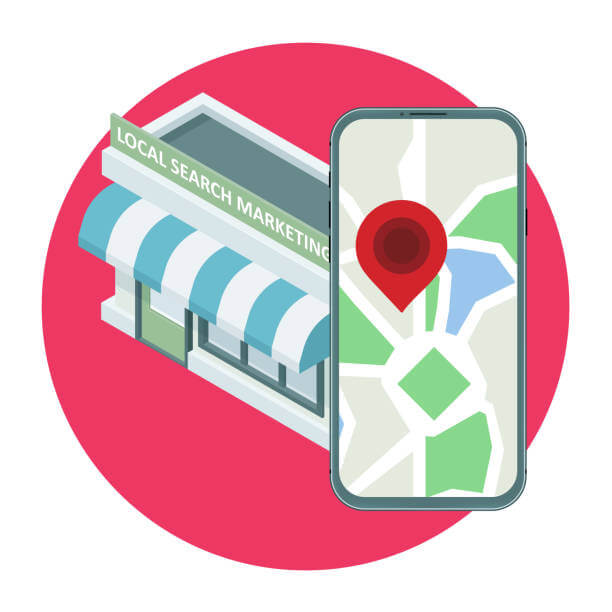
Optimize for Local Searches
This strategy is another effective mobile SEO tool to apply.
A greater proportion of mobile users make mobile searches with the phrase “near me” now than ever before, meaning there is a higher demand for local businesses.
Phrases such as “where can I buy” open now”, and “near me” are on the rise on search engines as users want to find businesses around them.
Therefore, it is a good strategy to optimize your mobile site to capture this traffic.
One way of doing this is by using local keywords so you can feature in local search queries.
Bonus Tip – Technical SEO
Technical SEO is another great tool for mobile SEO.
Some essential technical SEO tips include:
- Use a sitemap—this is useful for crawling and indexing.
- Use HTTPS to secure your site so that your visitors’ data is safe.
- Apply H1, H2, and H3 header tags to your content so that your content is organized in a hierarchy.
- Use schema markup so that Google will get an idea of the content type on your site.
- Use canonical URLs to curb duplicate content. Canonical URLs tell Google the content to use for mobile SEO rankings.
- Apply Accelerated Mobile Pages[AMP] for faster loading.
Conclusion
Mobile SEO is a different aspect of on-page optimization targeted toward giving mobile visitors the best user experience possible.
Since Google has made mobile-first indexing a criterion for ranking websites, most businesses have followed suit.
If you have not jumped into this moving wagon, you better do so before you’re left behind on all the organic traffic mobile users provide.
You have all the resources you need above.
How To Create SEO-Friendly URLs
The whole atmosphere surrounding SEO-friendly URLs is hazy, especially for those that are still novices in the SEO domain.
What are the best SEO-friendly practices that’ll surely get you the highest search rankings on search engines?
Stay put because, in this article, you’ll learn what SEO-friendly URLs are, their structure, why you should use them, and the best practices you should employ to rank higher in search engines.
What Is an SEO-Friendly URL?
To better understand the concept of SEO-friendly URLs, it’s best to start from the first principles.
First Things First—What Is a URL?
The URL acronym stands for Uniform Resource Locator.
It is the address of a web page that internet users type into a browser to get entry into the page. They are also called web links.
All web pages on the internet have a unique and specific URL through which internet users can access them.
The way you structure the URL of your web pages is called URL structure.
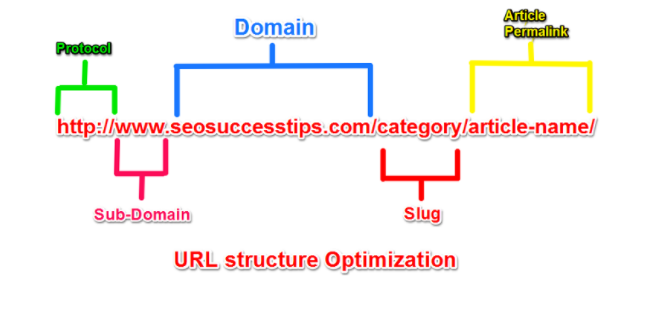
A URL consists broadly of three parts: the protocol, the domain name, and a path.
The protocol provides browsers with information about your web page. It can be HTTP:// or HTTPS://. The extra “s” in the second protocol stands for secure.
The subdomain comes after the protocol but before the domain. You can have several subdomains that are designed to impart organization to your website’s content.
You can choose any combination of characters for your subdomain besides www.
The domain is the specific and original address for your website, while the top-level domain(TLD) is usually the part of your URL represented by com, net, org, and others. The domain part is not configurable.
Furthermore, the path is the precise location of a post, page, or file. It is configurable and enables you to find a specific page inside the domain.
For search engine optimization purposes, the most relevant part of your URL is the slug.
SEO-Friendly URL
These are URLs that are made solely to meet internet searchers’ and users’ needs.
They are URLs designed for SEO purposes—to get the best search engine results page rankings.
SEO-friendly URLs describe a web page accurately by incorporating keywords that are readily readable by internet users and search engines.
An example of an SEO-friendly URL is:
- https://www.example.net/seo-friendly-blogs/
An example of a URL that is not SEO-friendly is:
- https://www.example.com/folder/dx54367/567
Why Are SEO-Friendly URLs Important?
Here are reasons why you should use SEO-friendly URLs:
User Experience
The chief aim of SEO is to optimize your content so that users can have a better user experience.
Additionally, SEO makes the ranking job easier for search engine robots.
It provides useful information about what your page is about.
Take the SEO-friendly URL example above, an internet user seeing the URL will know that the web page will be about SEO-friendly blogs.
The URL is displayed in the search engine results pages and when they are made SEO-friendly, they are attractive and informative to users, which can ultimately lead to higher click-through rates.

SEO Ranking
SEO-friendly URLs are a ranking factor for Google and other search engines. They rank web pages by interpreting and understanding URLs.
Even though it’s a minor SEO ranking factor, it still counts and several studies have shown that the top results on the search engine results pages have SEO-friendly URLs.
That cannot be a coincidence.
Links
Some content creators can make links to your web page by using the page’s URL as the anchor text.
Therefore, if the URL contains relevant and informative keywords, search engines will have more information to crawl with.
A Step-by-Step Guide on How to Create SEO-Friendly URLs.
URL optimization is an essential ranking factor for Google. In short:
- The length of a URL features as number 46 in the most relevant 200 ranking factors on Google.
- URL path is number 47.
- URL with keywords features as number 51.
- The URL string ranks at number 52.
That said, how do you tie all these together and create the perfect SEO-friendly URL for your web pages?
Keep reading for the best ten SEO-friendly practices.
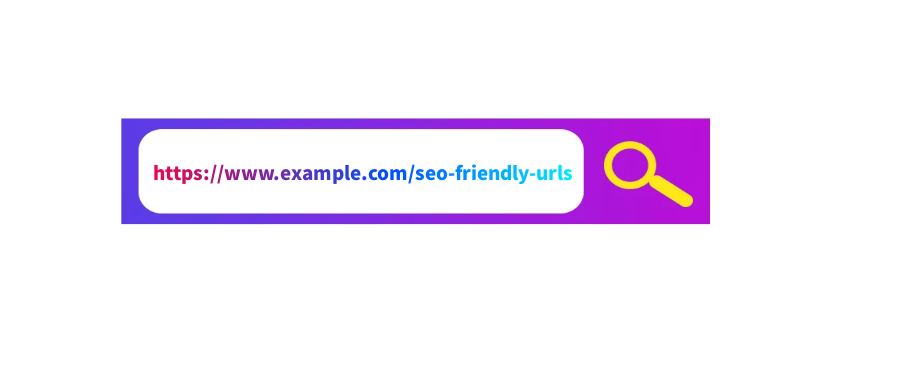
1. “Blog Post Titles”
When designing your URL structure, it’s advisable not to use the title of the blog post.
That is because the title is most likely going to be long, which will make your URL too long.
Using blog post titles in your URLs will incorporate stop words like “an,” “a,” “the,” “‘and’, ‘but’, and others.
URLs without stop words are clearer, cleaner, more appropriate, more appealing, and more professional, and generate more user interest.
When you want to update or change your content, URLs with blog post titles make it difficult because when you change the content, the web address becomes obsolete.
A helpful tip is to keep the title and URL as close as possible by incorporating your primary keywords.
2. No Numbers and Dates Please
You should not include numbers and dates in your URLs.
They serve no benefit to your visitors or Google robots. Numbers and dates make your URLs complex and are not beneficial in any way, shape, or form.
They increase your URL length, which is very bad for SEO-friendliness.
Google has other methods through which it confirms when content was made, so having it in your URL is completely irrelevant.
When you have URLs without dates, the click-through rates increase, and your content will rank high for years.
If your URL contains 2015, for example, users will assume your content was created in the year 2015 and are less likely to click on your website because they’ll assume your post is outdated.
They’ll click on one without dates, assuming that’ll be more current, even though it may not be so.
Updates are also harder to do when you incorporate dates into your URL.

3. Use HTTPS
Using HTTPS instead of HTTP makes your website more trustworthy to visitors to your website.
That’s because Internet users place a high premium on online security nowadays and are less likely to visit a site that is not secure.
HTTPS provides security and therefore trust to your website, unlike the almost obsolete HTTP.
The letter “S” demonstrates that your website is safe and secured with an SSL certificate.
That protects your website and your visitors from hackers seeking to steal data.
Besides the security benefit, HTTPS has been a Google ranking factor since 2014.
Additionally, if you don’t have HTTPS, you will have lower click-through rates because your visitors’ browsers will warn them that your website is unsafe whenever they click on a link to your website.
That is enough reason for them to not stay for long periods on your web pages.
4. Keep It Simple, Short, and Readable
You should eliminate superfluous information from your URLs so that they are simple and not intimidating to your visitors.
Additionally, URLs that are too long are automatically shortened in the search results. Therefore, any information that is not necessary shouldn’t be in the URL.
That doesn’t mean you should make it excessively short so that the descriptive function is lost.
It means cutting out unnecessary phrases and words like “stop.”
Long URLs create confusion for search engines and make it difficult for search engines to know what the topic of the page is about.
A backlinko study reveals a correlation between short URLs and higher rankings on Google.
Using short URLs on all the web pages on your website makes it easier for Google bots to locate, crawl, and index all your web pages.
Additionally, Brafton’s research revealed that short URLs have more social shares, which can impart your authority and expertise.
Short URLs are also associated with higher share and click-through rates.
The click-through rate is an essential ranking factor for search engines.
That’s because visitors use your URL to figure out what your content is about, and if it’s too long and contains so many numbers and stop words, clarity is reduced.
Therefore, they are less likely to click on your website.
Finally, aim to have a URL length of between 50 to 60 characters for the best results.
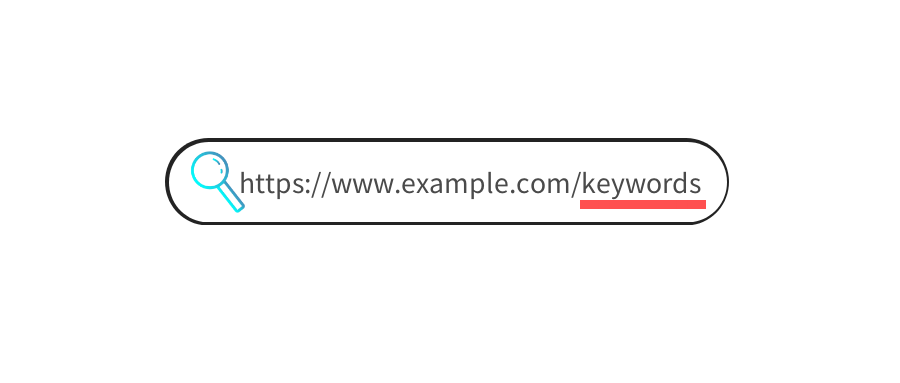
5. Use Keywords
This strategy is one of the most important ones to employ.
You should incorporate important keywords that you want your website to rank for and that potential visitors will likely search for on Google.
The keyword should be the target or primary keyword in your content.
These keywords should relate to the topic you discuss on your web page.
Keywords have the potential to drive web traffic to your website because your blog post features a topic that users search for on search engines.
Additionally, it tells Google what your web page is about. Google even says that URLs containing words that align with the structure and content of your website are friendlier for internet users visiting your website.
That’s why it is essential to do detailed keyword research before you begin creating content for your web page.
Incorporate the primary keywords into your URL as they provide insight into the content of your web page.
A user that searches for “men’s watches leather” is more likely to click on a website that has those keywords in it than one that doesn’t.
In cases where the primary keyword is not descriptive enough, you can use keyword modifiers to provide better information.
Keyword modifiers add more context to your keywords in the URL.
To illustrate, leather in the above example is a modifier, providing more information about the primary keyword—men’s watches.
Additionally, it’s useful to place your keywords at the beginning of your URL rather than at the middle and end. Search engine spiders do not put as much consideration into the ending part of a URL.
Furthermore, it’s not only bad practice to stuff keywords into your content. It’s bad practice to stuff your URL with keywords too. Use the same keyword only once in the URL.
Finally, for best practices, you should use a maximum of three words in your URLs.
6. Use Hyphens
There should be no spaces in your URL. Use hyphens(-) in place of spaces.
Also, separate words with hyphens and not underscores(_).
Even though search engines can accommodate underscores, you should use hyphens to separate words because your visitors’ eyes read hyphens better.
Using hyphens to separate words is the best SEO practice as the URL is more readable and the information is easily accessible.
Additionally, you shouldn’t use any special characters, as this encourages consistency in your URL.
Special characters like square brackets, commas, and others are unsafe characters and should have no place in your URLs.
They create problems and usability issues for browsers.
7. Canonical URLs
Another useful SEO-friendly URL tip is to use URL canonicalization. What does this mean?
It simply means using canonical tags to get rid of duplicate content on your website.
Sometimes, you may have two pages displaying the same or similar content. That is called duplicate content.
Duplicate content confuses search engine crawlers. They won’t know which of the duplicates to rank on the search engine result pages.
As a result, they display your website low on the result pages after ranking the others.
That’s where URL canonicalization comes in.
This strategy specifies which of the duplicates is the original page so that the search engine crawlers can crawl and index the page easily.
They act as a preferred URL and address for a web page.
8. Lowercase Letters
It is best practice to use lowercase characters for your URLs.
Uppercase letters are associated with more redirects and 404 errors than lowercase letters.
Additionally, lowercase letters are less associated with duplicate content than uppercase letters.
9. Use Subfolders more than Subdomains.
On a general note, using subfolders, directories, and categories is more SEO-friendly than subdomains.
That is because using subfolders and others establishes more authority than subdomains.
Search engines can easily mistake the subdomain to be a different entity from the main domain, which can affect link building and reduce trust.
Additionally, you should not have too many subfolders in the URL, as this is unnecessary and adds complexity to something that should be very simple.
Ensure the URL of your web page is close to the domain and this is achievable if you use fewer subfolders. This also reduces the overall length of your URL.
For the best SEO-friendly practices, use a maximum of two folders in the URL.
10. Good Domain
If you can remember, I earlier said that the domain is the first part of a URL and you cannot configure it.
That implies that once you select a given domain, you cannot alter it in any way, so you’ll have to use it that way.
For this reason, it’s good practice to select a good domain from scratch.
Characteristics of a good domain include:
- It is short, with a maximum of three words.
- It is easy to memorize and remember.
- It is catchy and readable.
- net,.com, or.org domain is preferred.
A good domain breeds trust and positively impacts your website rankings.
Conclusion
SEO-friendly URLs are a must if your goal is to rank on the first page of Google search results.
That is why we have scoured the internet to bring you the best SEO-friendly practices.
On a final note, keywords are central in this tactic, which is why strong and detailed keyword research is integral to getting the most effective keywords to include in your URLs.
How To Do SEO Keyword Research?
SEO or search engine optimization is a necessity we’ve all become dependent on these days. And, if you are after learning about SEO, knowing about keywords is the first step. Keywords make your work suitable content for a particular group of users or audience who will make up the traffic you’re aiming for.
How do you know which keywords are of interest to users? This is not a question asking for your opinion. This time, you’ll need to perform SEO keyword research. It is when you do research for the most frequently entered terms via search engines by users as they try to find your products online. Once you get a list of keywords, you’ll have to analyze each of them, compare how your competitors have used them in their content, and lastly, pick the ones that will be useful for your business.
If you cannot control what users type in the search engines that lead them straight to your website, then try doing it the other way. Studying what they need and want based on those keywords is vital to understanding your target customers better which then leads to a positive result for your business. Using keyword research tools can make this easy for you.
What Are Keyword Research Tools?
Doing the research manually will just eat up your time and cause you a lot of confusion and stress. Keyword research tools will ease all that away by fast-tracking the process. Any of the popular tools can help you find ideas on the possible topics to write about that your target audience will be interested in.
Importance of Keyword Research Tools
Keyword research tools have a lot of good things to offer to businesses. In all aspects of your business, keyword research can bring:
- Marketers gain better insights regarding the trend in marketing today. This allows you to pinpoint the topics and keywords to use for the content which interests your customers.
- Once you’re able to pick the most relevant keywords for your blogs and other content, it will be easier to rank in search engine results which will eventually lead to higher traffic that online businesses all want to achieve.
- Because keywords give you the idea of which topics are often searched by users and their search intent, you can also start meeting their needs, and provide a call to action that creates a high search volume.
- Doing keyword research lets you discover the most asked questions and provide answers so more customers will come and visit your website.
- Keywords lead customers automatically to your website and there, you should be able to provide them with the information they need to improve their ranking and traffic.
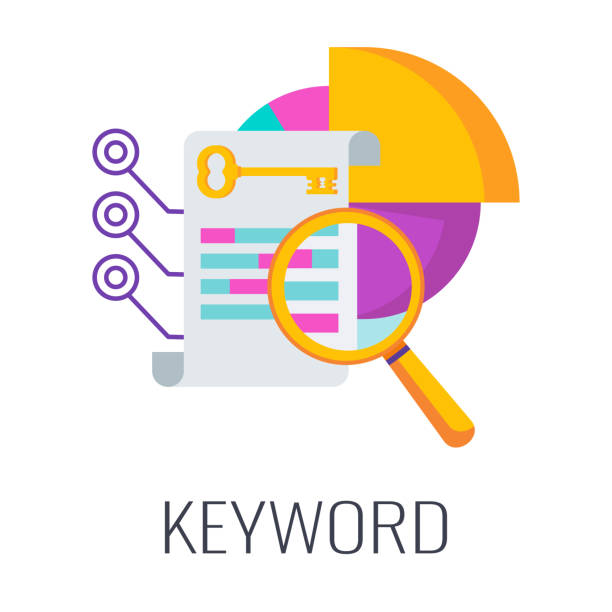
All About Search Intent and Search Volume
One clear example of keyword researching is when you type the phrase “what is love?”. The term “love” would be considered a keyword. Your search intent for typing in that phrase on Google or Bing will, thus, have a great impact on the search volume for that particular keyword. When you enter the phrase “free antivirus software”, your intention may be to download free software for detecting and blocking a virus from entering your PC or laptop or to simply be aware of them.
Search intents of users are what online businesses must target to get their customers coming to them and not just to express what they want to say. Your content should be something that people would want to discover. When you’re able to do this, you will not only enhance your content strategy but also make such a nice effect on your marketing strategy.
Elements of Keyword Research
When you enter a word or topic on the search engine, you can have a long list of keywords and key phrases that might be hard to sort out. In that case, here are the three main things that you should look for when choosing those that can be used for your business.
- Significance to your business
Google bases its ranking of websites and pages on their connection to a user’s intent which, in your case, is for promoting your business or brand. Otherwise, Google will just junk your content if it’s not even capable of beating the contents on other websites. Yours must be more than good enough for Google to notice its true value.
- Being an authority.
Becoming the best source of information regarding a topic is another way of making sure you are doing keyword research perfectly. You have to ensure that your content has all the necessary helpful information to become an authority in such a field or topic. It must be able to promote your content well to help you gain more social attention and backlinks.
- Number of searches made about a particular word or phrase
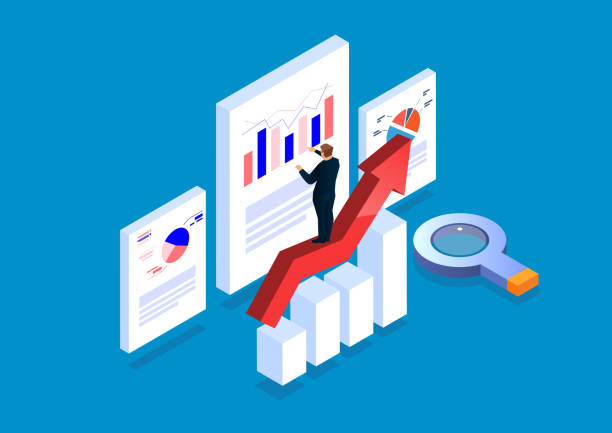
The search volume plays a big role in this task as it dictates how many people are interested in your topic. If no one searches for the keywords you included in your content, then it will not result in any traffic for your website. MSV or monthly search volume determines the frequency of searches done for a particular keyword.
Finding Keywords for Your SEO Strategy
Coming up with your list of keywords may be a big challenge for some online businesses. More than just knowing about the search intent and calculating the search volume of a word, it is important to make a plan to properly determine the right keyword strategy. By doing so, you’ll be able to achieve a powerful and effective strategy to get you on top of the search results.
Step 1: Make a list of the important topics about your business.
Write down everything significant for your business. Begin with your product or service’s purpose, price, description, etc. Use that list as a guide later on what words to include in your keyword research. You may also try to empathize with your customers and ask yourself what topics would you be interested in if you were them. For SaaS companies, the typical keywords may be the following:
- Subscription
- Merchants
- Software
- Application
- Cloud-based
Step 2: Write down keywords related to each topic on your list.
Think of all the keywords you can relate to each topic you have listed down. They must be words and phrases that are most significant to be used in your content and which your target audience may be interested to read about.
Step 3: Learn about search intent and its effect on keyword research.
Understanding why and for what purpose a user searches for a particular keyword is what matters more than just using the keywords in your content. When you know about their intentions, it will be easier to reach out to a bigger audience and address their need for a solution to their problems. You may test a user’s intent regarding a keyword by entering it on Google or Bing yourself to see what the results will be. Be sure also to create content that is related to what Google needs for a particular keyword.
Step 4: Perform keyword research.
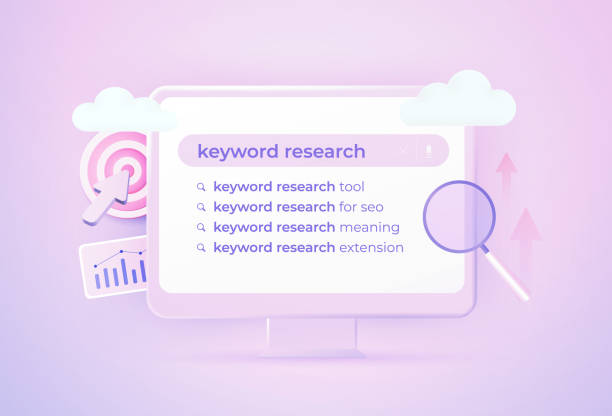
Try and check if the keywords you have listed for each topic already have clicks from users. Make sure to see how many times they were entered on the search engine. When you plug in some of those keywords, check also if there are other terms you have missed to include on your list from the search result. There will be suggested terms as well that might be related to your topic and can be added to the ones you are already considering using in your content.
Step 5: Use keyword research tools to verify the search volume for the keywords and topics you found.
This time you’ll need the help of any application used for keyword research. This includes Ahrefs, and SEMrush, among others. Whichever you choose should be able to give you valuable results about which keywords will make a great impact on your content when used. They can also help you sort out those keywords and trim them down to just the ones you will surely use for your topics.
Best Free Keyword Research Tool
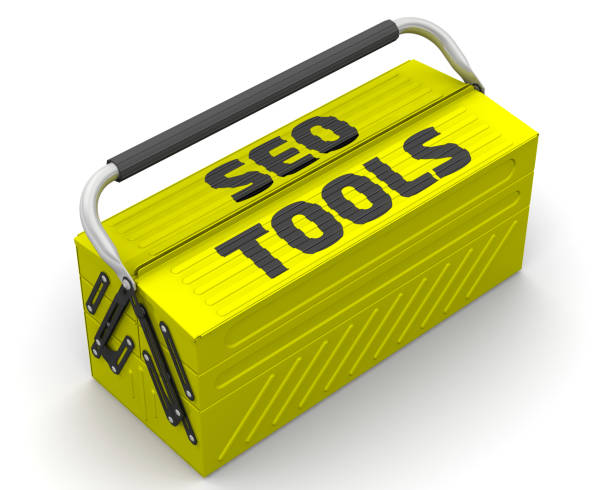
There are several free keyword research tools to choose from that offer ease of use, efficiency, and accurate results. However, there is only one that stands out which many marketers also find useful in growing their business.
Google Keyword Planner is a free keyword research tool. It is the perfect planner you will ever need to use to ensure better traffic and attention from your customers. Google Keyword Planner allows you to check out the terms, phrases, and topics that are related to your business. From that, you can discover new insights into how often those words were used.
As a planner, this tool lets you plan your budget also for the campaigns you want to create for your business. In making your SEO strategy, Google Keyword Planner provides you with other related and equally important information for the betterment of your business. Specifically, this keyword research tool gives you information about the keyword’s monthly searches, competitiveness, seasonality, and estimated CPC cost.
Google Keyword Planner comes with simple yet very efficient features. It may not be very functional but this tool is considered the best choice for the development of business websites. The traffic created using this keyword research tool comes straight from Google’s search engine and is highly convertible to monetization.
Final Words
Learning about SEO is not just a necessity today to succeed in your online business but it is also a way to realize how important every click was made by your target audience. You must keep in mind that in one click, something will change and may have an effect on others. Similar to e-commerce, you must use that knowledge to your advantage in a way that will also benefit your customers. It’s an opportunity you can use to provide better products and more efficient services in the future.
Long-tail Keywords: The Key to Boosting SEO
As a website owner, one powerful SEO strategy is to carry out keyword research that provides the most effective keywords that you can use to generate great content with a high conversion rate.
That’s where long-tail keywords come in.
Even though long-tail keywords are super low in popularity and SEO difficulty rating, they are the best for creating content that is specific and targeted to a particular audience.
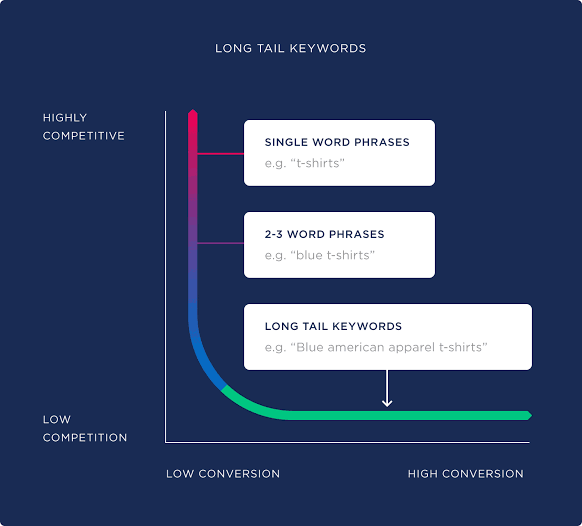
If you don’t know how to conduct keyword research for long-tail keywords to boost organic rankings, then this is a must-read.
In this article, I’ll be diving deep into the concept of long-tail keywords, why they are important for SEO, and how you can find them.
Therefore, I urge you to read on.
What Are Long-Tail Keywords?
Long-tail keywords are search queries or terms that have low competition levels and a small search volume per month.
They are usually longer and more specific when compared to the shorter “head” variants.
Long-tail keywords usually have lower keyword difficulty with high conversion rates.
Long-tail keywords contribute to a large majority of all searches on Google, irrespective of the fact that only a small number of users search for long-tail keywords individually.
A study by ahrefs showed that long-tail keywords with less than ten searches each month make up 95 percent of keyword searches in the U.S. keyword database.
Long-Tail Keywords—Why Are They So Named?
Long-tail keywords are so named not based on the number of words they contain but on the monthly search volume compared to the head keyword.
Several one-word keywords exist that have a monthly search volume of less than 100.
Additionally, some five-word keywords exist that get hundreds of thousands of searches per month.
Therefore, what makes a long-tail keyword is not the number of words but the volume of searches it has per month.
Why Are Long-Tail Keywords Important for SEO?
Below are some reasons why you should use long-tail keywords for better SEO rankings.
Lesser Competition
Long-tail keywords are not as competitive as the traditional shorter head keywords, which is why it’s easier to rank with long-tail keywords.
To illustrate this point, if you are doing keyword research for “link building” on Google, there are more than six billion search results on the search engine results pages.
If you aim to take the number one ranking spot, that means your website has to out-compete six billion other websites, which is difficult.
If, however, you change your approach and search for the longer version of the keyword, say “best SEO link building software”, the search result is just above 47 million, which is way less than “link building.”
Additionally, Google Adwords—that is, cost per click—is more expensive with short head terms than long-tail keywords with low popularity.
Greater Conversions
One awesome feature of long-tail keywords is that they are very specific, which is good for high conversion rates.
When internet users search for long-tail keywords on Google, they are usually closer to purchasing the items than those who search for short-head terms.
For instance, consider the keyword “men’s wristwatches”. A user that makes that search on the internet is probably doing random research on wristwatches for men rather than trying to buy one.
However, someone that searches for the longer variant like “men’s watches leather £500” is further down the buying cycle and is more likely to buy the product.
Therefore, long-tail keywords are associated with more conversion traffic than short-head terms.
Contents with Long-Tail Keywords are Easy to Create.
Long-tail keywords are very specific.
For this reason, if you want to create content for your blog and you build it around long-tail keywords, you’ll do less work.
That’s the same reason why content created with long-tail keywords has a lower word count.
On the contrary, head keywords are very broad.
If you generate content using head keywords, you’ll need to provide more details to satisfy visitors.
Therefore, generating blog content using long-tail keywords is less tasking than using head keywords.
Long-Tail Keywords Are Abundant
As I’ve said before, long-tail keywords make up 95 percent of the total keyword searches per month.
That means there are so many long-tail keywords that you can use to generate content for your website and get traffic.
Long-Tail Keywords–The Search Guide
Searching for long-tail keywords to use for your web page content can be difficult.
However, here are some methods to get long-tail keywords with low difficulty ratings:
Google Autosuggest
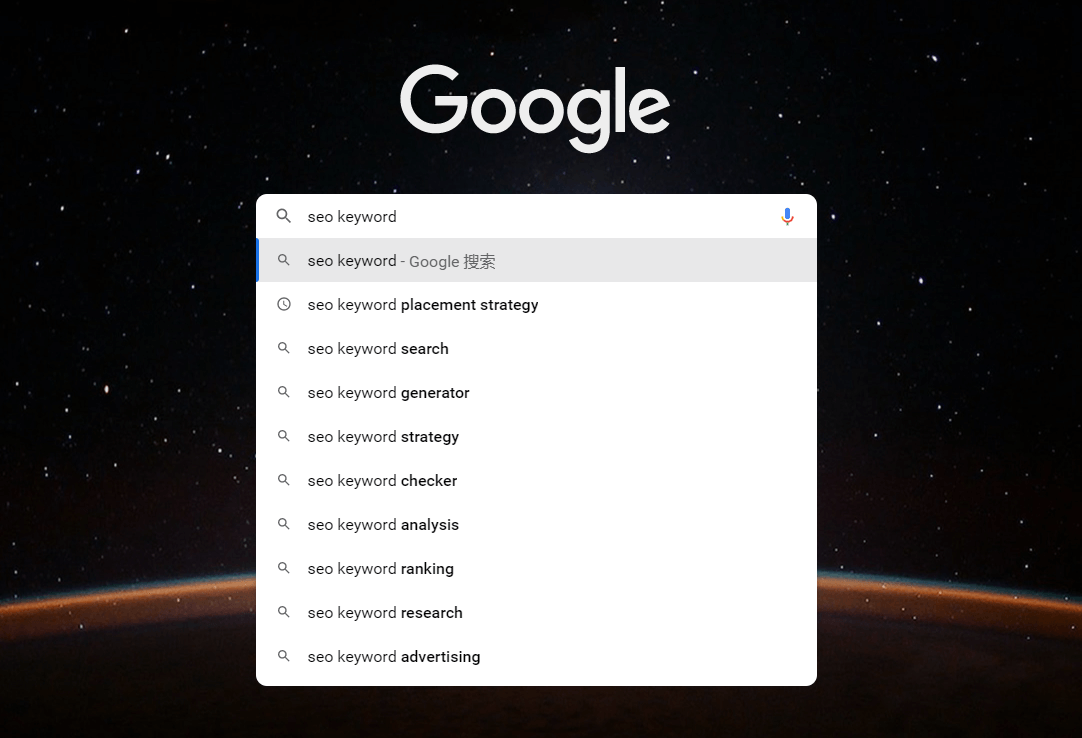
This tool provides you with long-tail keywords that are rather popular and competitive.
You can use this tool by typing in your target keyword in the Google search bar and adding any alphabet.
Ahrefs’ Keywords Explorer
This tool gives you thousands of unpopular and less competitive long-tail keywords.
It also has a feature where you can see the keyword difficulty score, which is also helpful for getting the least competitive keywords.
Additionally, you can get the long-tail keywords in question form on this tool.
To use this tool, just type any keyword in your niche into the search bar.
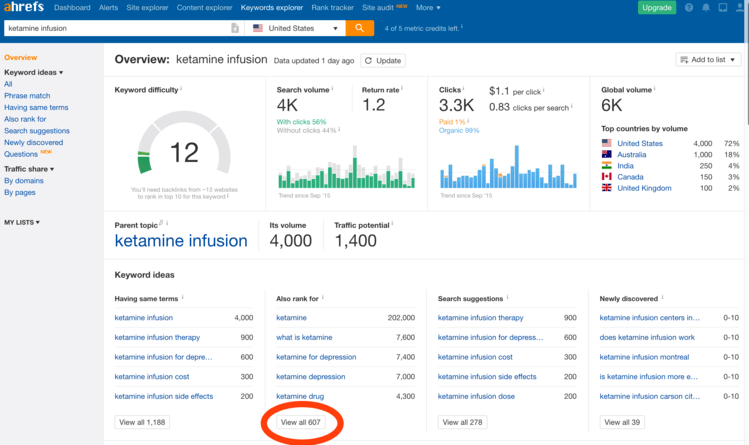
You can see several thousands of long-tail keywords by applying the search volume filter.
If your website is new and your brand lacks authority, I highly recommend this tool for finding long-tail keywords to generate content for your web pages.
Use the same Keywords Your Competitors Rank for
A good strategy for getting long-tail keywords with low popularity is to use the ones that your competitors are using to rank.
You can use Ahrefs Site Explorer to examine their content so that you can get their ranking long-tail keywords.
If you use about five to ten websites of your competitors, you can get plenty of long-tail keywords to generate content for your website.
“Searches Related to…”
“Searches related to…” is the last part of Google’s search engine results pages that you usually reach after scrolling down the search results.
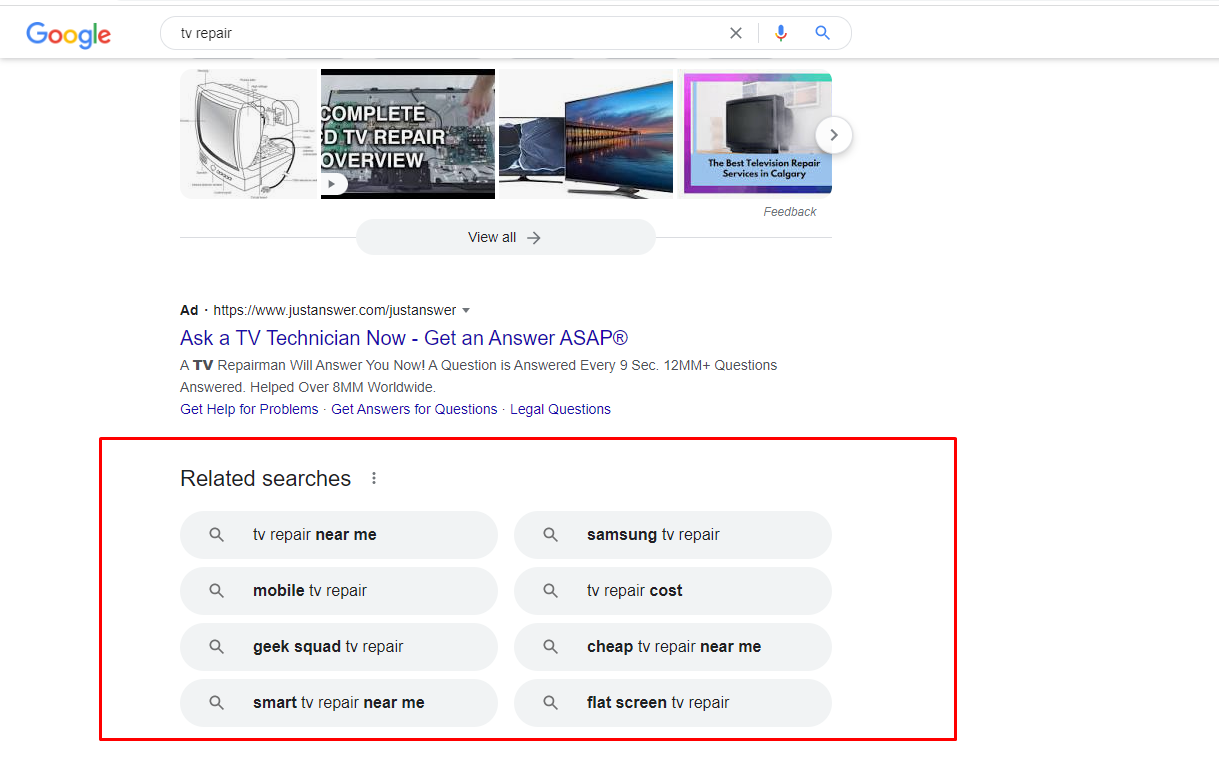
This area is good ground to harvest long-tail keywords with high conversion rates.
To use this long-tail keyword research tool, type in the keyword you’d like your content to rank for—say TV repair.
Then scroll to the bottom of the search engine results pages to the section tagged “Related searches for TV repair.”
There you’ll find several long-tail keywords to use for your content.
A pro tip is to type in one of those keywords from that section and search for it on Google. Then scroll down to the “Searches related to…” section for that keyword.
You can repeat this process until you have a rich list of strong long-tail keywords.
Answer The Public
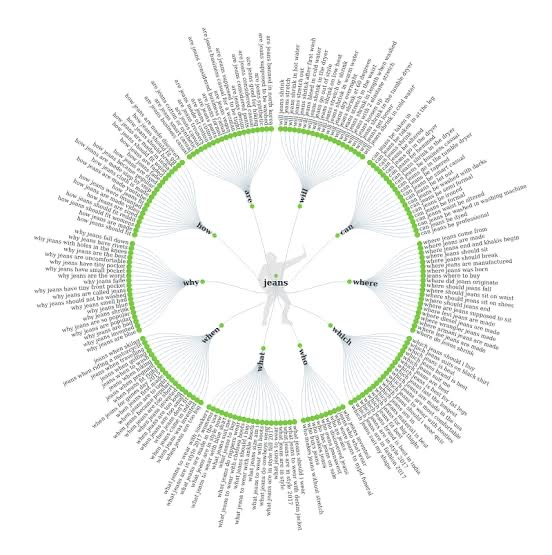
Answer The Public is an effective keyword research platform that provides you with keywords in the form of questions.
To make use of this tool, type in the broad keyword in the search section and select “Get Questions.”
The results that are displayed are the popular questions that searchers ask about that keyword, and they are long-tail keywords.
You can get the results in alphabetical order and download the results in CSV format.
Soovle
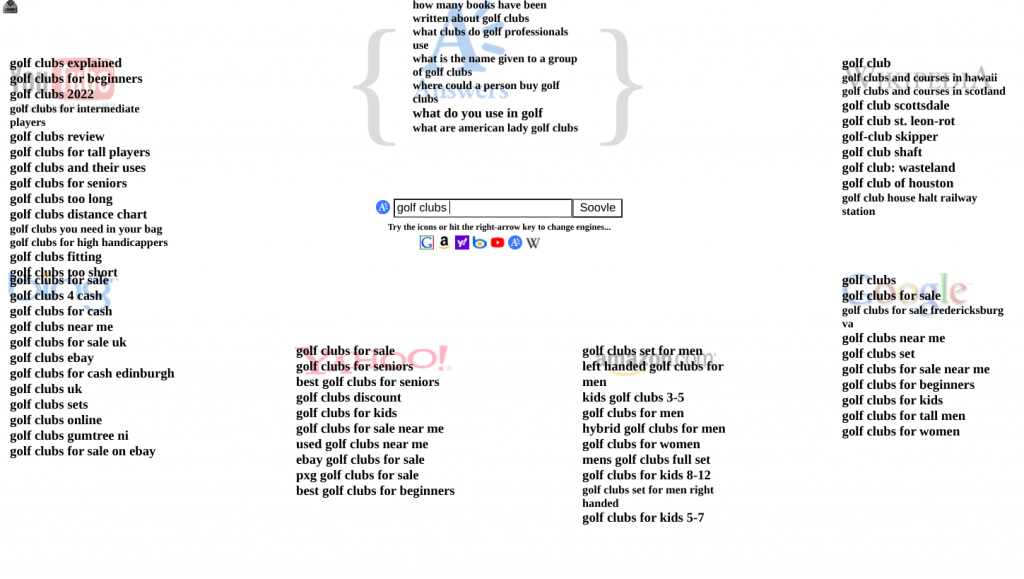
This tool is a free keyword research platform that you can use to get long-tail keywords.
Soovle gathers keywords from Google, YouTube, Wikipedia, Amazon, Ask.com, and others.
Therefore, it supplies you with untapped long-tail keywords that you may not find in other keyword research tools.
To use Soovle, visit the platform and search for the target keyword in the search field.
It’ll show you different keywords you can use to develop your content across different platforms.
The download as a CSV file option is also available on Soovle.
People Also Ask for Boxes
People Also Ask Boxes is another great keyword research tool for getting long-tail question keywords.
To use this tool, first search for your broad keyword in the Google search box.
Then proceed to the “People Also Ask…” box down in the search engine results pages.
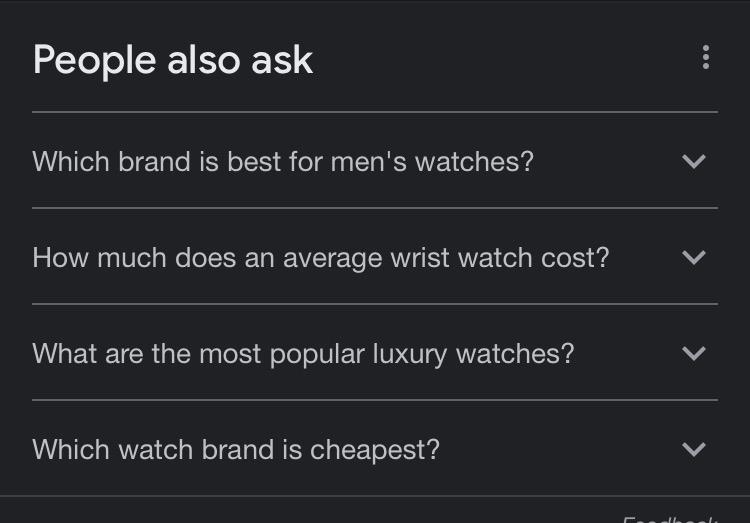
The suggestions are questions that other Google users have typed that are related to your broad keyword.
Even when you expand any of the suggestions, you’ll see answers to the questions with other questions you can add to your growing list of long-tail keyword questions.
Awesome right?
Google Trends
Google Trends is a great tool for carrying out long-tail keyword research.
This tool helps you to know if the demand for that keyword is falling or growing.
To use this tool, visit Google Trend and type in the long-tail keyword in the search field, which will yield an “interest over time” result that is based on news headlines and search volume.
The result may be a stable trend, an uptrend, or a downtrend, depending on searchers’ interest over time.
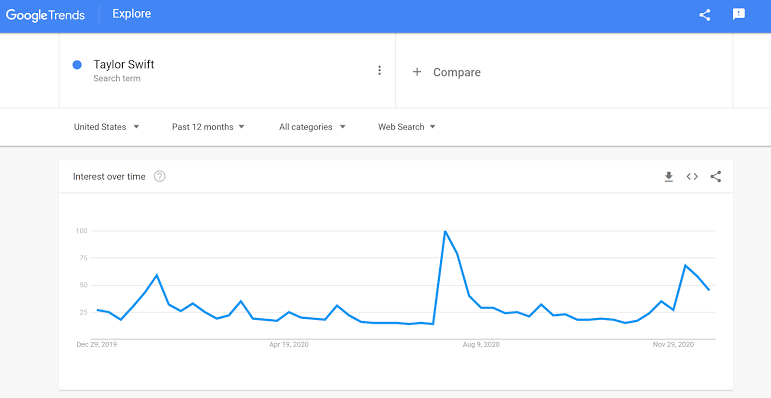
A good tip is to look at the “Related Queries” section for other keywords related to the one that you searched for.
Use Quora, Reddit, and Other Niche Forums.
These discussion forums are also a good place to source long-tail keywords with low popularity to develop content on your website.
Internet users frequently visit discussion forums to get answers to questions they don’t find on Google.
Therefore, it is good practice to regularly visit forums for great ideas when doing keyword research.
Questions that people ask on forums and discussion groups get asked on search engines like Google and others.
To use this strategy, go to the forum where you can find your desired audience.
Then check for the titles of the recent threads and adeptly scrutinize the phrases and words members use in the thread.
Conclusion
The benefits of long-tail keywords cannot be overemphasized.
Besides helping you target a specific audience, they also help you generate high conversion rates and boost your overall SEO rankings.
That is why you should use all the keyword research tools above and take your website to the next level–SEO-wise.
10 Ways to Fast Boost Your SEO Rankings
It’s a common saying that life doesn’t give you what you want, it only gives you what you deserve.
The same can be said of your SEO rankings.

You can have a website, but if you don’t employ good SEO strategies, your rankings will be poor.
That’s why it’s important to put in conscious efforts to improve your SEO ranking.
With the continuous expansion in the eCommerce industry, many online store owners wonder how they can use potent SEO strategies in the search for organic traffic.
Cheer up, as that’s what this article will be about.
Therefore, sit tight as you learn about practical ways to improve your SEO ranking fast.
10 Ways to Fast Boost Your SEO Ranking
Here are nine ways of boosting your website’s SEO ranking fast:
- Reviews Help you Improve Site Ranking
- Boost Your Website’s Loading Speed
- Track metrics with Google Analytics
- Latch on to On-Page SEO Factors
- Update Old Content to strengthen SEO Traffic
- Produce high-quality content.
- Dwell Time Improvement
- Create a Mobile-Friendly Atmosphere
- ObtainQuality Backlinks
- Improve Descriptions and Titles.
1. Reviews Help you Improve Site Ranking
Customer reviews are more than just a sign of trust in the customer, they can also provide a potential SEO ranking boost. Reviews, in today’s competitive SEO environment, are the way to build loyalty, sales, and traffic to your brand. According to @sewatch:
90% of consumers read reviews before visiting a business
72% of consumers don’t act until they see a positive review
88% of consumers believe that online reviews are like personal recommendations
Five ways to improve your store sites ranking
- Display reviews on your website
Customer reviews are a potential source of content for your site properties. By presenting them on your site with Ryviu, you can enrich your content while adding relevant text to your page, both of which can help improve organic page rank.
- Highlight off-site SEO
Regarding Moz.com, off-site SEO-related factors such as third-party reviews contain more than 50% of the weight of ranking. Factors such as relevance, credibility, and authority can always affect a page’s ability to run.
- Reviews as referral traffic
Focusing on referral traffic can support your SEO efforts by building strong organic traffic.
- Star ratings for higher rank
Having 4-5 star reviews will draw more attention to your product page and give your company an edge.
- Reviews Drive CTR
Customers will always prefer to click on the highly rated link when choosing from alternative products. The more hits & CTR, the higher ranking provided, since Google will see your business as valuable.
Use Ryviu to Benefits Your Online Reviews
Increase sales and conversion
Develop brand awareness
Build Loyalty & Reputation
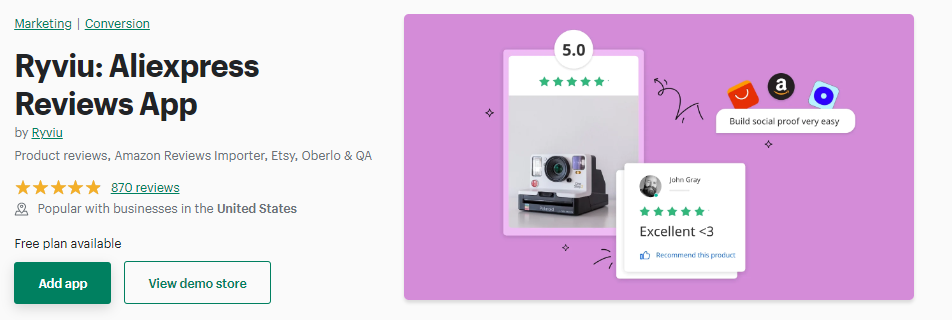
2. Boost Your Website’s Loading Speed
It is a good SEO strategy to have web pages that load quickly. Your target should be three seconds or earlier.
The slower the load speed of your web pages, the lower your Google ranking, because Google places a high emphasis on loading speed and it is a key ranking factor.
But aside from your Google ranking, slow speed rates affect the quality of the interaction your visitors have with your pages.
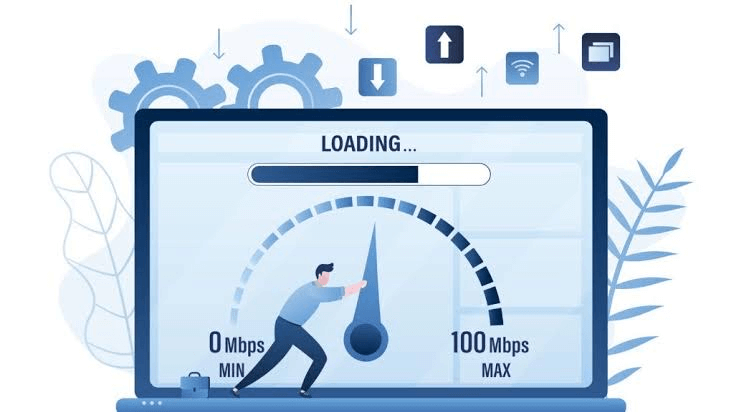
Nobody wants to stay and wait for your web page to load. In short, if your pages don’t load within three seconds, your visitors will leave faster than they entered your site.
That will, of course, increase your bounce rate, which is terrible for your business.
Due to such negative interactions, it, therefore, hurts your ranking as well.
Several studies have revealed that sites that rank at the bottom load slower than those at the top, meaning sites ranking at the top are significantly faster compared to those ranking at the bottom.
A website that loads slowly is one of the major causes of high bounce rates.
Moreover, the normal human attention span lingers for about eight seconds.
This means retaining a fast site is more important than ever.
In compliance with Google, “speed equals revenue,” which virtually means that slow loading periods heighten the odds that your visitors are likely to vacate your page.
Furthermore, slow loading pages not only degrade user experience but also the performance of Google crawlers.
Google will rank sites lower if performance is poor.
Therefore, you should optimize your website so that organic traffic will increase and your search engine ranking will improve.
How to Increase Speed to Strengthen SEO Rankings
- Use buffering platforms to curtail resource usage on your site.
- Optimize all your visual elements, like images and videos. Ensure they are in the required format and size. Use images with smaller sizes and a JPEG or PNG format.
- Avoid JavaScript as much as possible.
- Use occasional external sources or anything that yanks data from another website.
Remember, Google is all about providing “quality” results, which include site speed and overall performance.
Here’s a pro tip—check out the speed of your web pages using Google’s Page Speed Insights page. You should do it for both your desktop and mobile sites.
3. Track Metrics With Google Analytics
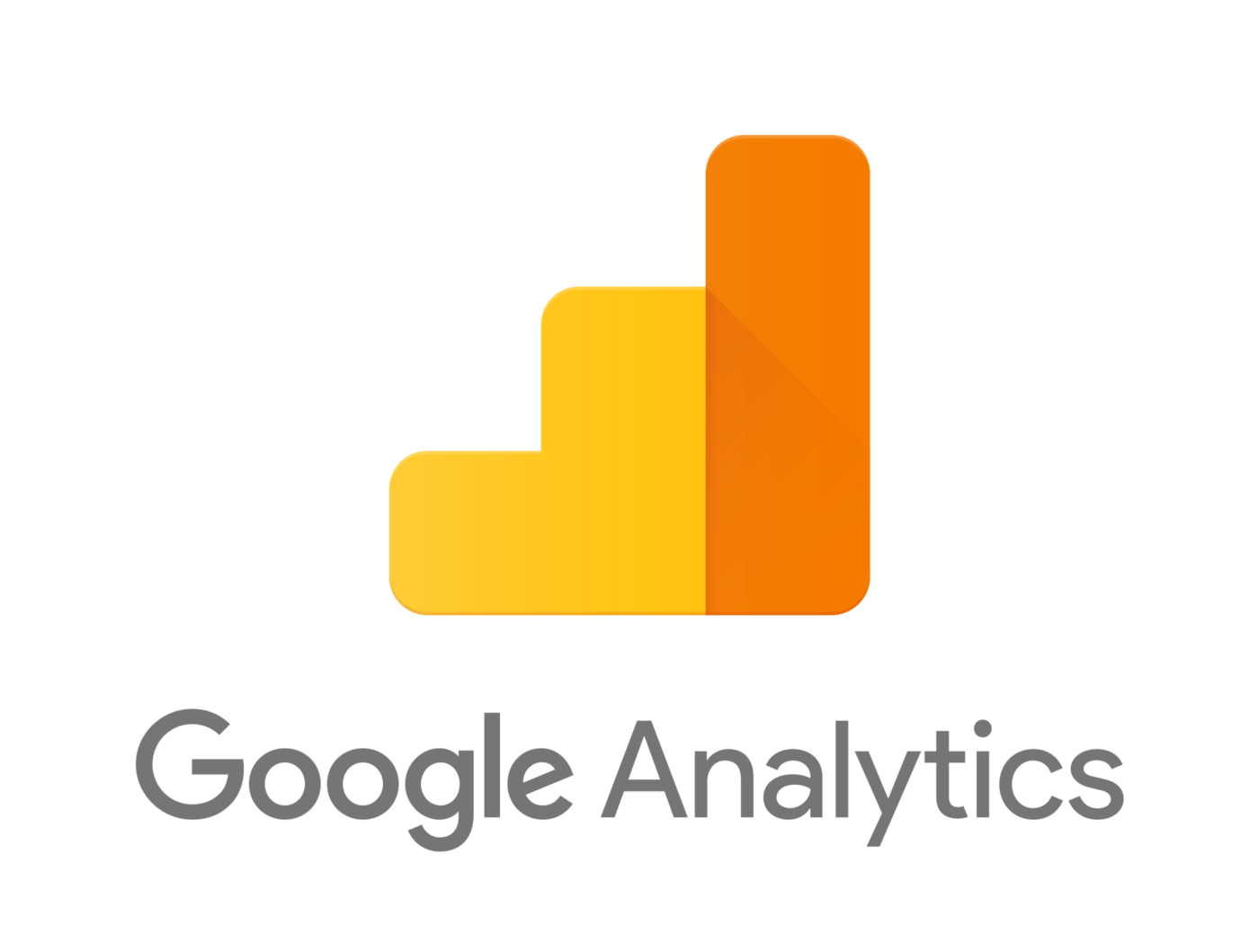
Learning how to understand and track metrics from Google Analytics is an essential SEO strategy.
The metrics help you get good information about the behavior of your visitors and how you are ranked, which aids you in creating better content for them.
Some of these metrics include:
- What web browsers are your guests logging in from? Improve the user experience by knowing the browsers your visitors use and modifying your web design to suit them.
- The most prevailing device users tour your site with Do your consumers commonly visit your site from a desktop or mobile device? Understanding this allows you to develop content modified to the most used screen size, which strengthens the overall user experience.
- Recommendation Traffic: Google Analytics provides information that tells you where your website visitors come from. That means you can know your traffic source, whether from organic traffic, direct traffic, or paid traffic.
- Understand your competition/ rivalry: You can get insights into the traffic of your competitors and use that data to work out how you’ll modify your content strategy to be more productive. That implies making use of gaps in your competitors’ strategies to meet customers’ needs in ways the competitors are not doing.
- Know what your customers are doing when they enter your website: You should carefully examine which of your web pages constantly bring visitors in, the number of pages they tour, how long they spend on your site, and where they leave. These details are important because with them you can track the pathway of your visitors on your site so that you can create more SEO-friendly content for them.
4. Latch on to On-Page SEO Factors
Another big step to take that’ll improve your SEO ranking fast is jumping onto the on-page SEO train.
Google uses your page address and meta title to get information about your content.
To score a good SEO boost, ensure your URLs and meta titles are short and very clear. They should also be relevant to the target keywords you want your website’s content to rank for.
Some may argue that meta descriptions don’t have a direct bearing on your rankings, which is true. But the catch here is the word “direct.”
Even though their role is not direct, they play that role well indirectly.

Meta descriptions play a massive role in determining whether or not a user clicks on your website.
That’s because they provide potential visitors with an idea of what your web page content will be like and if it’s relevant to their search query.
Some may argue that Google does not use your meta description, but this is only true 30% of the time.
In 70 percent of cases, Google still uses the meta description you provide as long as it is relevant to the user’s search query.
It’s also good practice to keep your meta description character count around 150 so that the extra characters don’t get chopped off by Google.
Here are some of the best tips to keep your meta description and title as SEO-friendly as possible:
- Make sure your structure is consistent.
- Keep fluff and superfluous terms at arm’s length. They should be short, clear, and straight to the point.
- Enrich them with keywords, but don’t fall prey to keyword stuffing. Remove all stopwords from your titles.
5. Update Old Content to Strengthen SEO Traffic
You must update your content regularly. Some reasons include:
- By updating your older content you improve your website ranking.
- There are more updates on the topic.
- Additionally, you might have forgotten the necessary aspects that will assist the reader so you want to include them.
- Possibly, you may have discovered new SEO procedures that will improve the article’s appearance on Google.
- It could also be that you found out users are seeing your article but not clicking it due to poor titles or meta descriptions.
- Additionally, you may have improved your writing skills over time.
These are a few reasons why you should review your content from time to time to improve your ranking as well as offer better services.
If you don’t update your content regularly and users tour those past contents, it could affect the user experience, which will influence the search results.
Enriching old content will stimulate SEO. You should never underrate the importance of updating older articles.
It’s not good to have users come to your website and see content that is five years old.
There goes your user experience and organic traffic.
6. Develop High-Quality Content

If you want the heightened possibility of your website being bookmarked by visitors, then create high-quality and relevant content.
To steer extra traffic to your website and accelerate its popularity, give visitors a reason to keep coming back.
Your content needs to be high-quality, current, and relevant to them, and that’s a reason to keep on revamping with time.
7. Improve Dwell Time
Dwell time is the amount of time a user spends on your page or site per visit.
When you have content that is new, valuable, and relevant to their search queries, you will retain visitors to your web page for longer periods.
That will improve your dwell time, reduce your bounce rate, and drive up organic traffic.
Websites that deliver highly informative content generally have longer dwell times.
Additionally, dwell time is a ranking factor Google considers when ranking web pages on search engine result pages.
After all, if a visitor hastily hops off from your page, it sends a clear message to Google that that visitor doesn’t find your page relevant to the search query.
Therefore, your page will feature low on Google’s search engine results pages.
To summarize, you should aim to have a high dwell time, which will improve your SEO rankings and help generate more organic traffic.
8. Create a Mobile-Friendly Interface
It’s no longer news that mobile devices make up a large percentage of users on the Internet.
This implies that the contents of your web pages have to be mobile-friendly if you want to engage those users.
However, you’ll need more than a responsive design.
Some technologies and formats are not compatible with smartphones.

Presently, it’s now about speed and efficiency.
Can a user browse the text without having to zoom in and out of your web page interface?
Is the navigation bar easy to manage on a high-pixel-wide exhibit?
Do you feature touchable controls on your web pages that are simple to use?
These are a few valid approaches to take into account when developing your website.
Furthermore, Google’s PageSpeed Insights is a useful tool.
This tool will scan your web pages, giving you a detailed report and scrutinizing the regions you are expected to fix for much-improved mobile friendliness.
9. Obtain Quality Backlinks
This tactic is another powerful SEO strategy.
Each time a valuable website with authority and expertise links back to the contents on your site’s web pages, the search engine is told that your content is valuable.
If you build stellar content, people will want to backlink to your website.
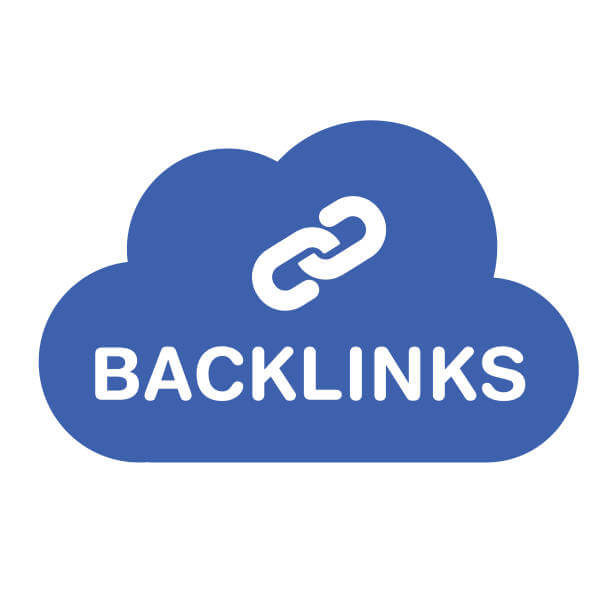
Here are some useful tips on how to develop your backlink portfolio:
- Directories lists: make an offer to websites and give expertise and high-quality content for curating lists in your niche.
- Shareable Content: create social media links. Their shares are a sharp way to produce backlinks.
- Newsworthy content and publisher alliances.
- Follow the trends.
Getting backlinks requires plenty of work.
So, backlinks will improve your SEO ranking on Google’s search engine results pages, so you shouldn’t underestimate them.
10. Improve Meta Description and Titles
You should create appealing titles that are optimized for the human eyes.
You also need to assess how search engines like Google will read the page.
By including your keyword phrases and primary keywords in the title as well as the description, you optimize them for better Google rankings.
Additionally, Google will better comprehend what your content is all about.
Using long key phrases rather than single keywords is also good practice.
44.7 percent of Google’s top 10 search results have key phrases of about five or more additional words.
If you include these phrases in your meta description and titles, you fine-tune how Google comprehends your content.
Furthermore, you’ll get more organic traffic because visitors can see from the result pages what your website is about.
It’s very necessary to provide users with exactly what they are searching for, and your titles and meta descriptions are the initial impressions they’ll see.
The Top Tools Pros Use to Elevate SEO Rankings
In the quest for higher rankings on Google search engine result pages, there are tools you’ll need to enable you to meet your desires.
Some of them are:
- Best Overall SEO Software–SEMRush
- Best SEO Plugin for WordPress – Yoast
- Best Advanced SEO Software – Ahrefs
- Best SEO Crawling Software – Screaming Frog
- Best Outreach Software – Pitchbox
Conclusion
Search engine optimization consumes a lot of time, but it is still an undoubted aspect of owning a successful website.
Nonetheless, the hard work is worth undertaking because, with this, you can steer thousands of organic visitors to your website or blog.
By keeping up to date with modifications to the search engine optimization algorithm and implementing any changes, you can improve your SEO ranking.
Lastly, you should pay close attention to your website, user experience, and Google’s SEO algorithms.
Never presume that what works today will work tomorrow.









